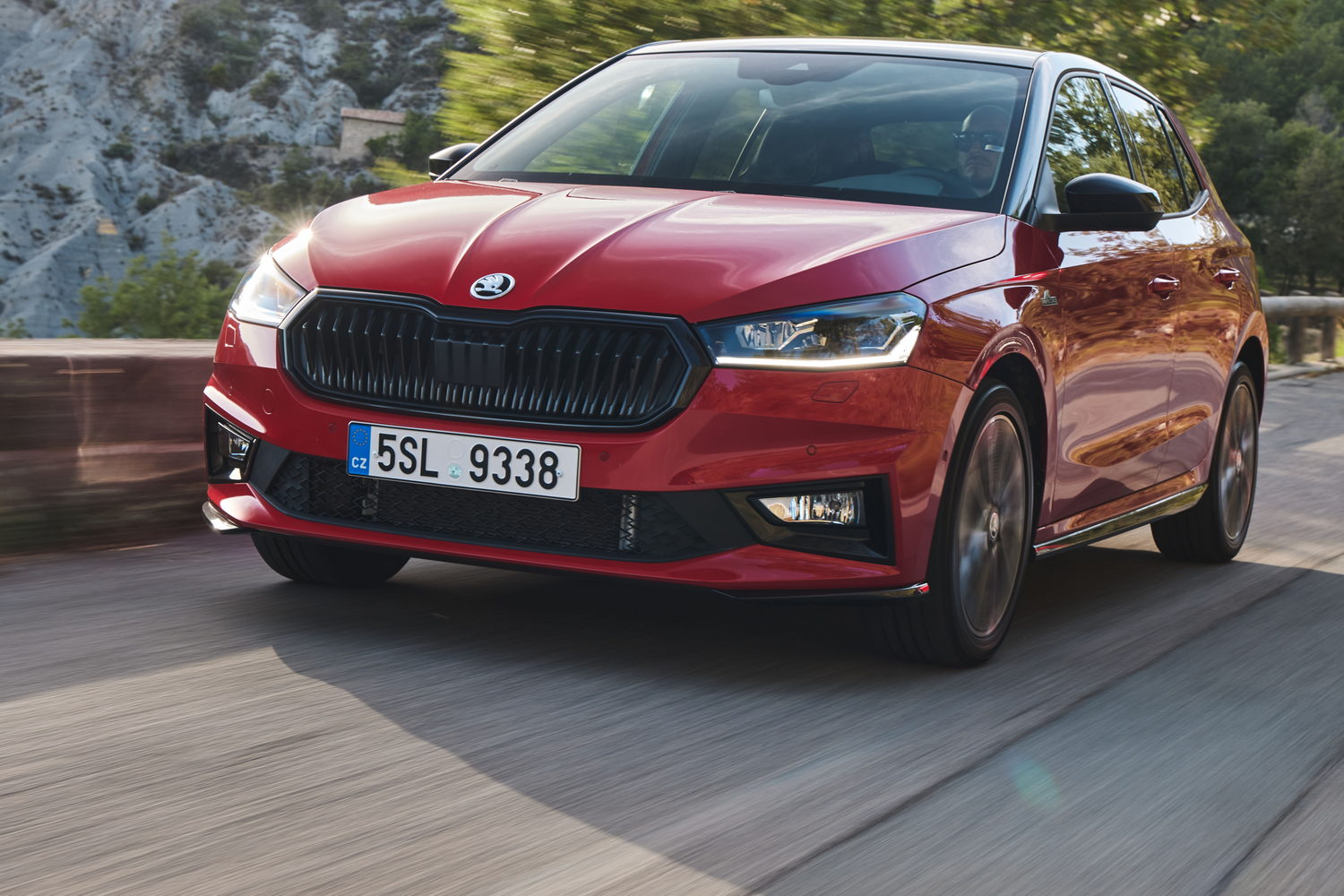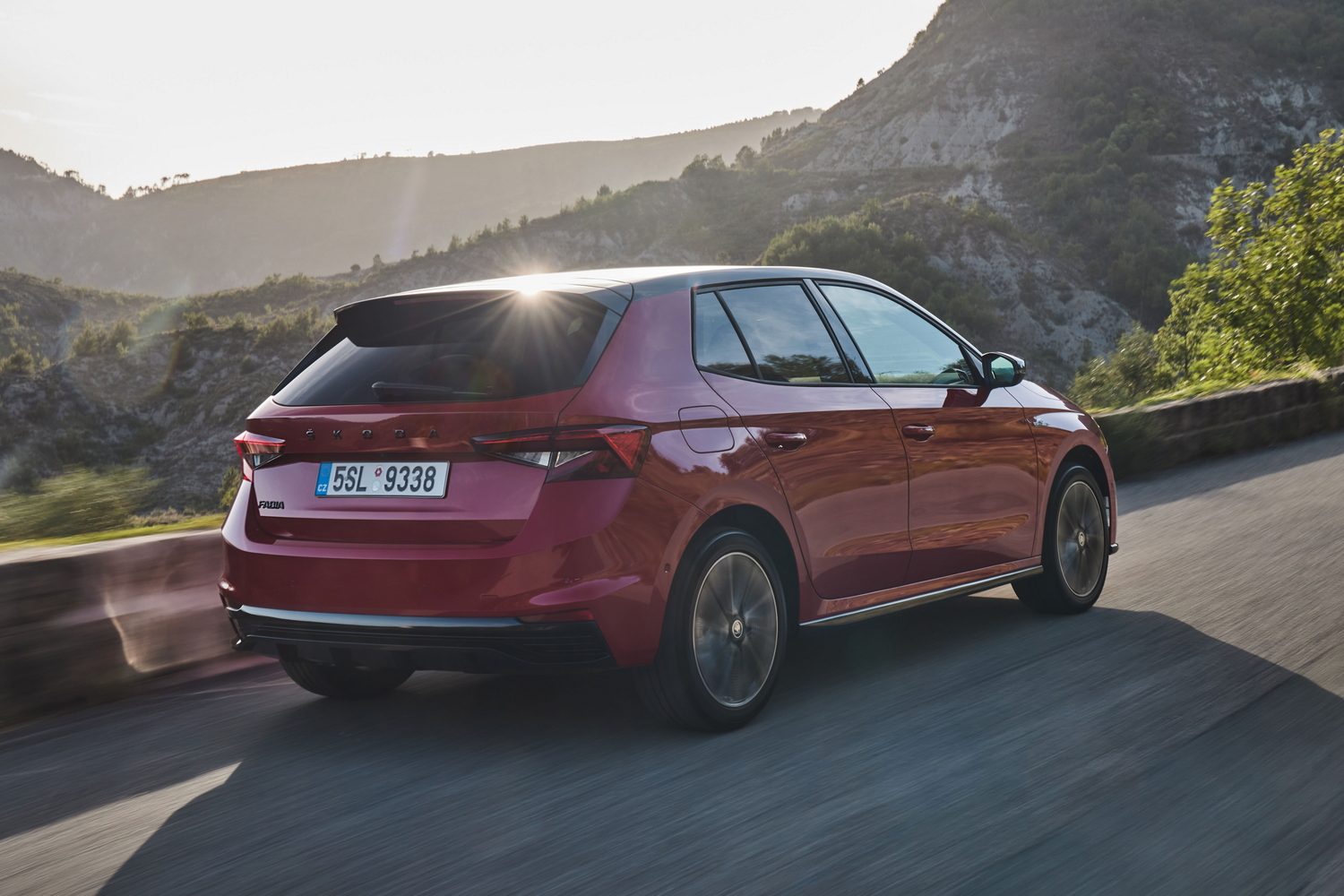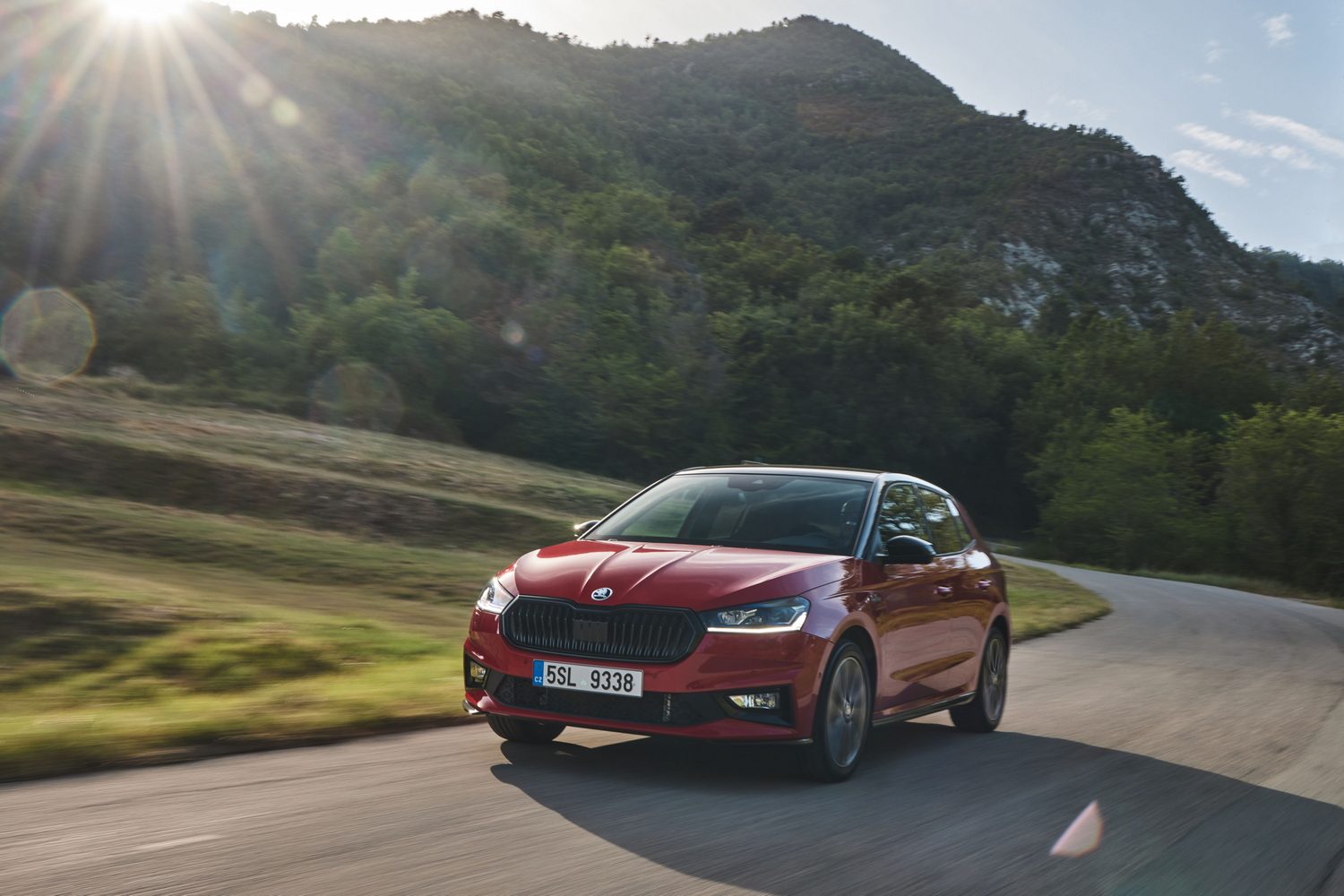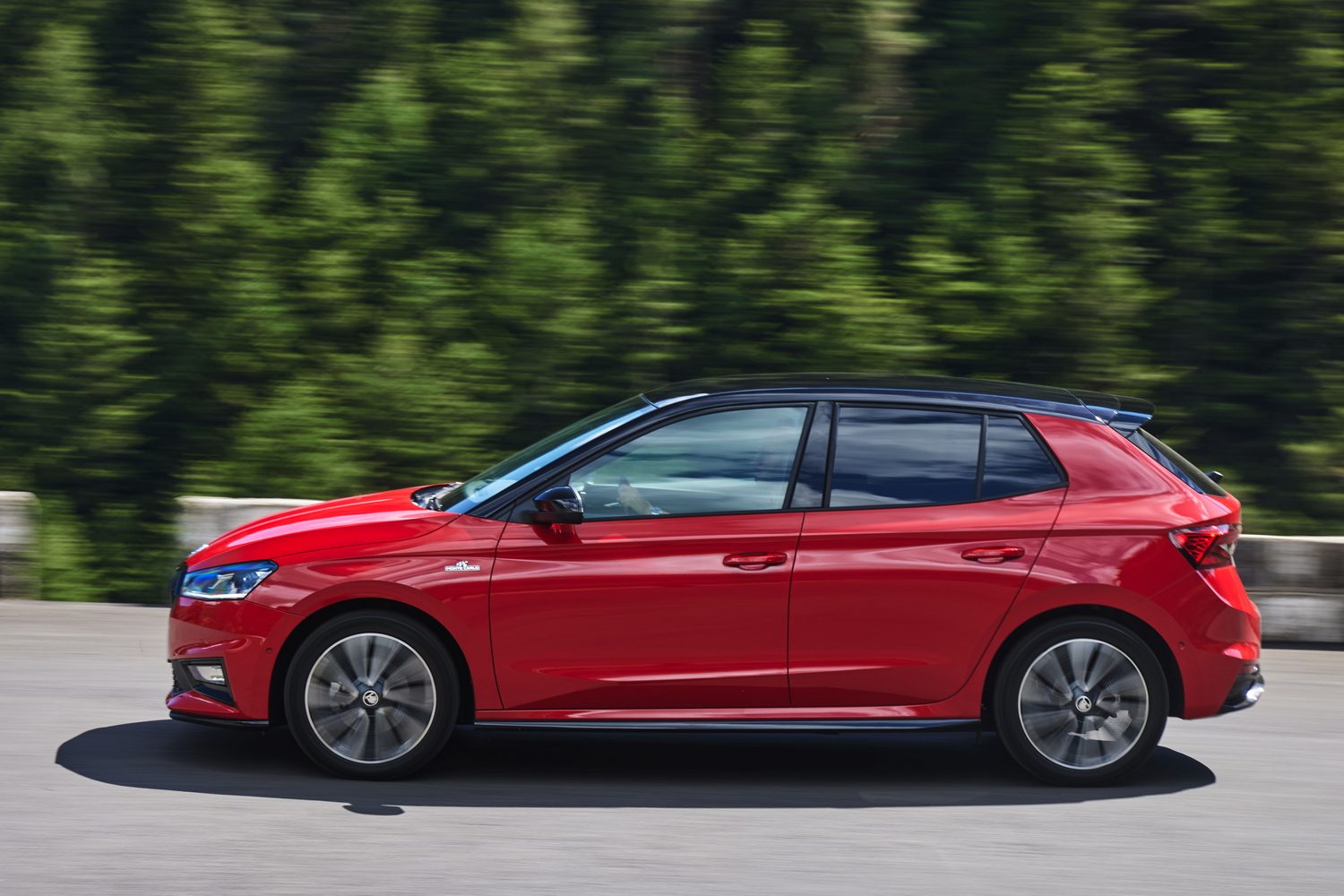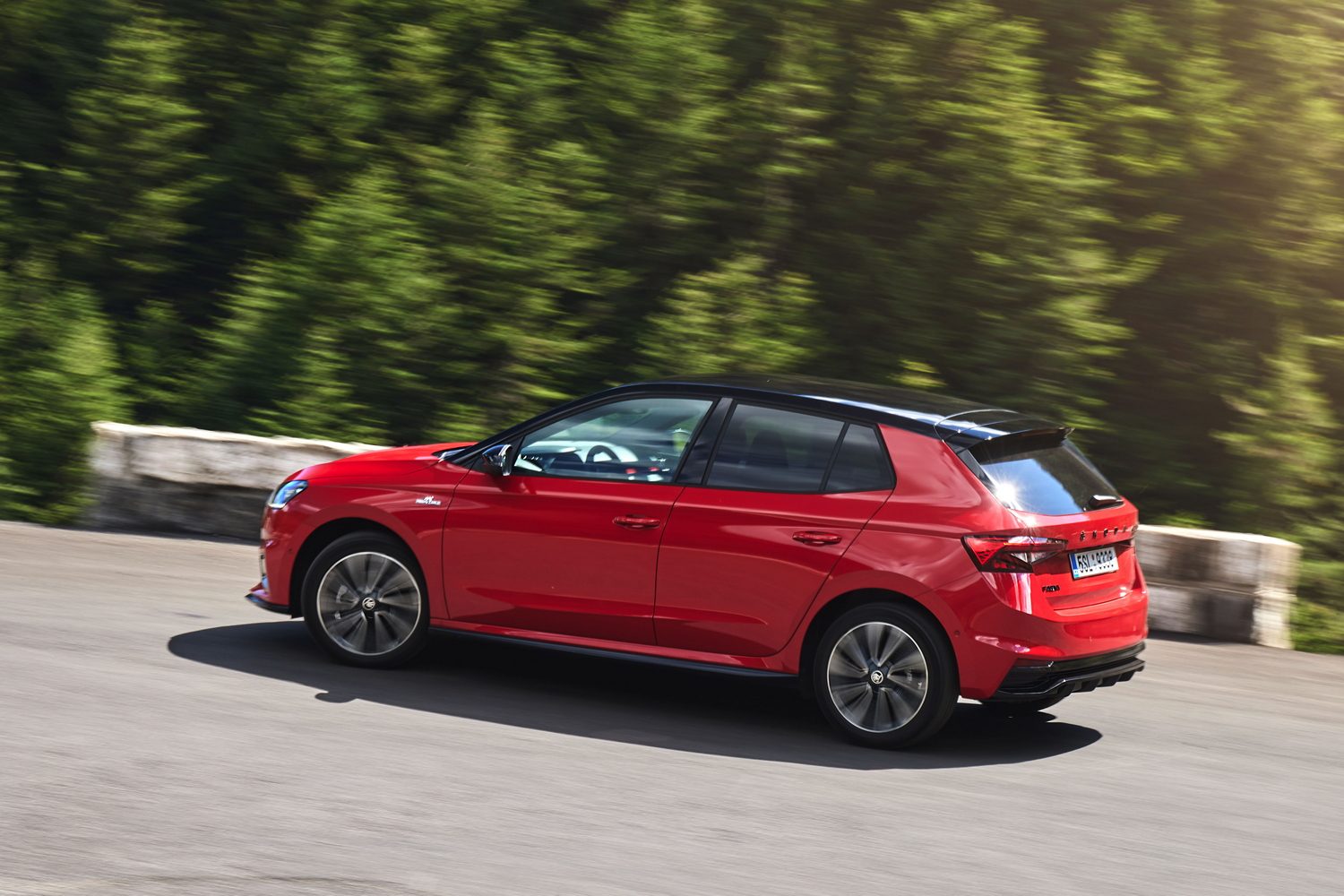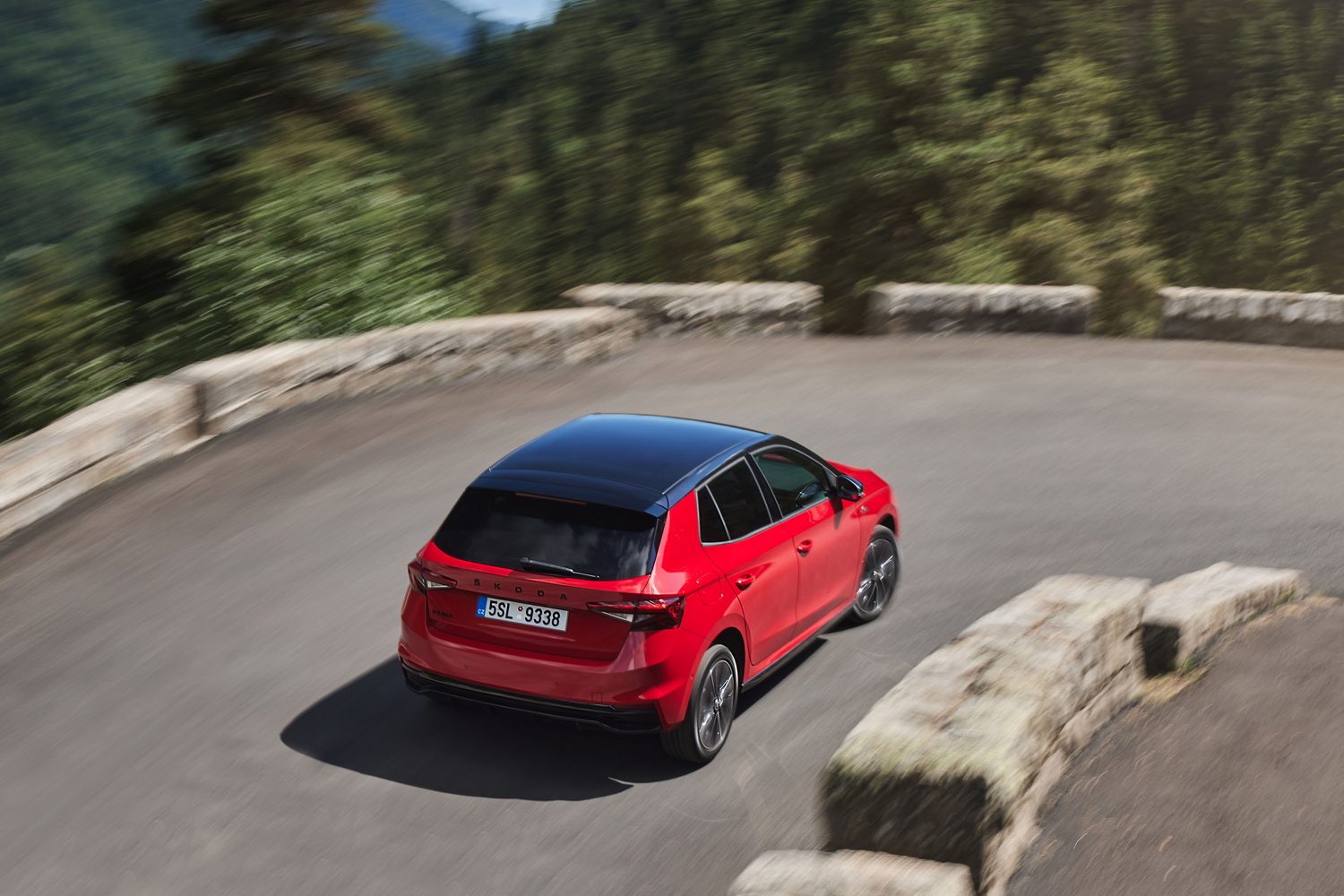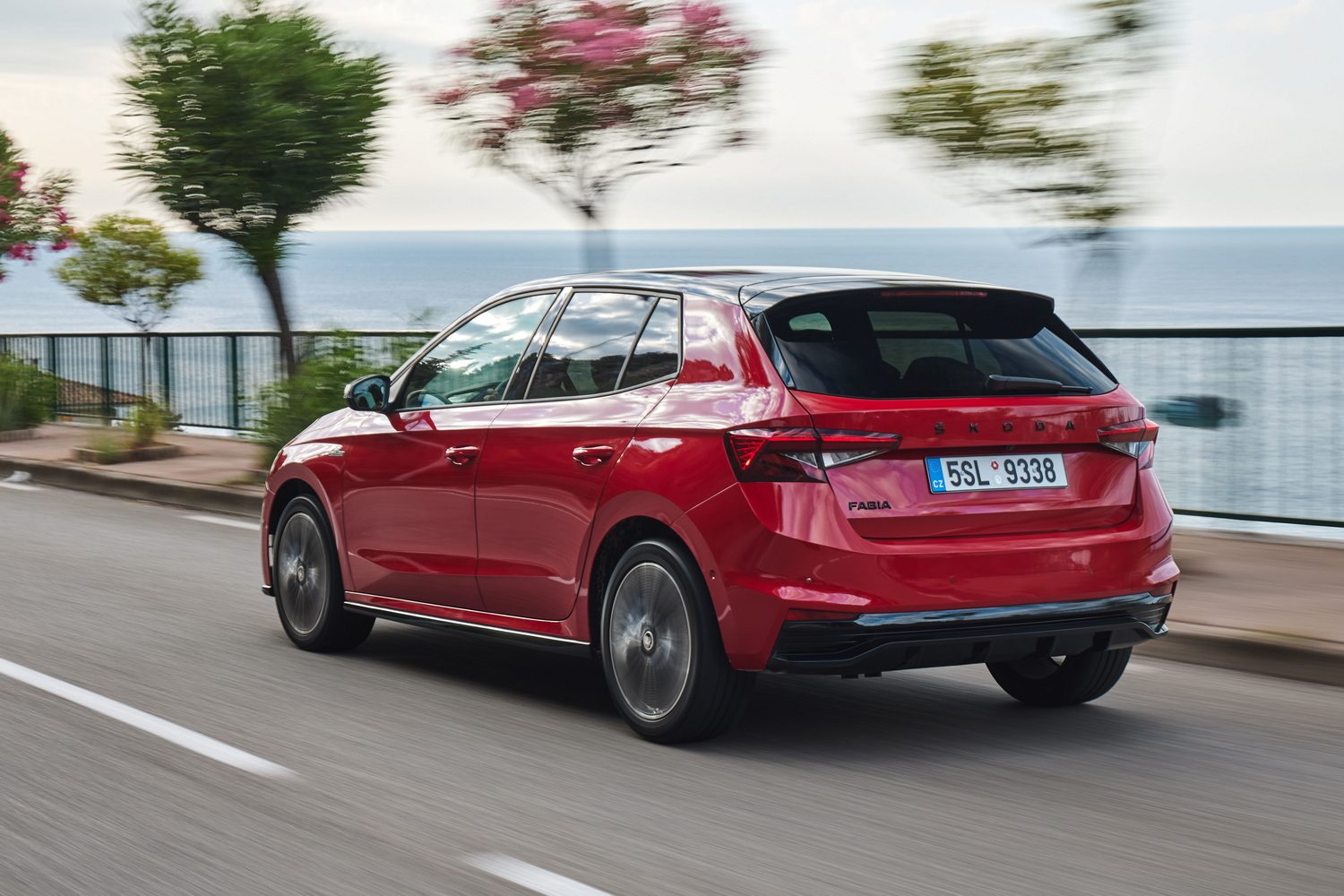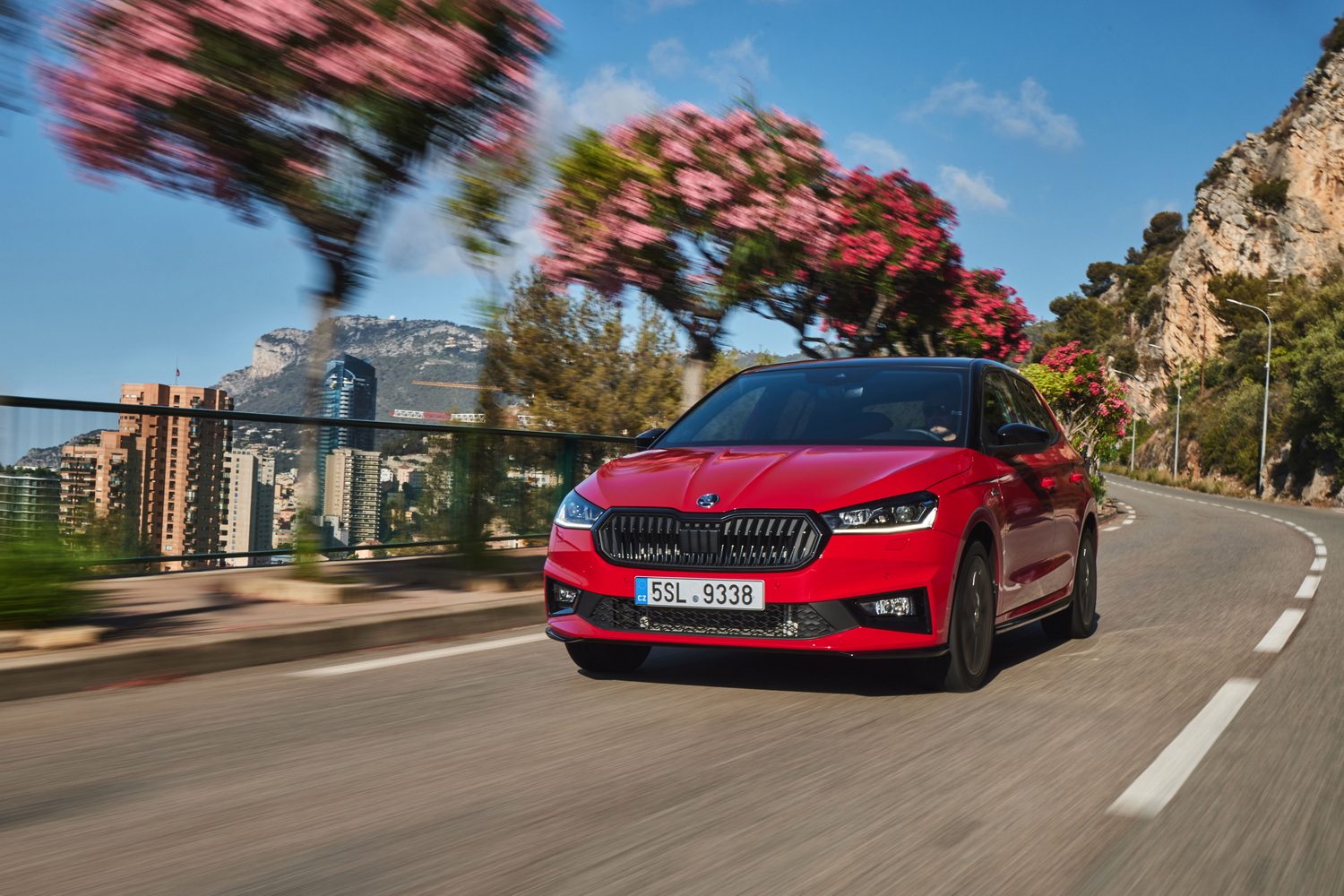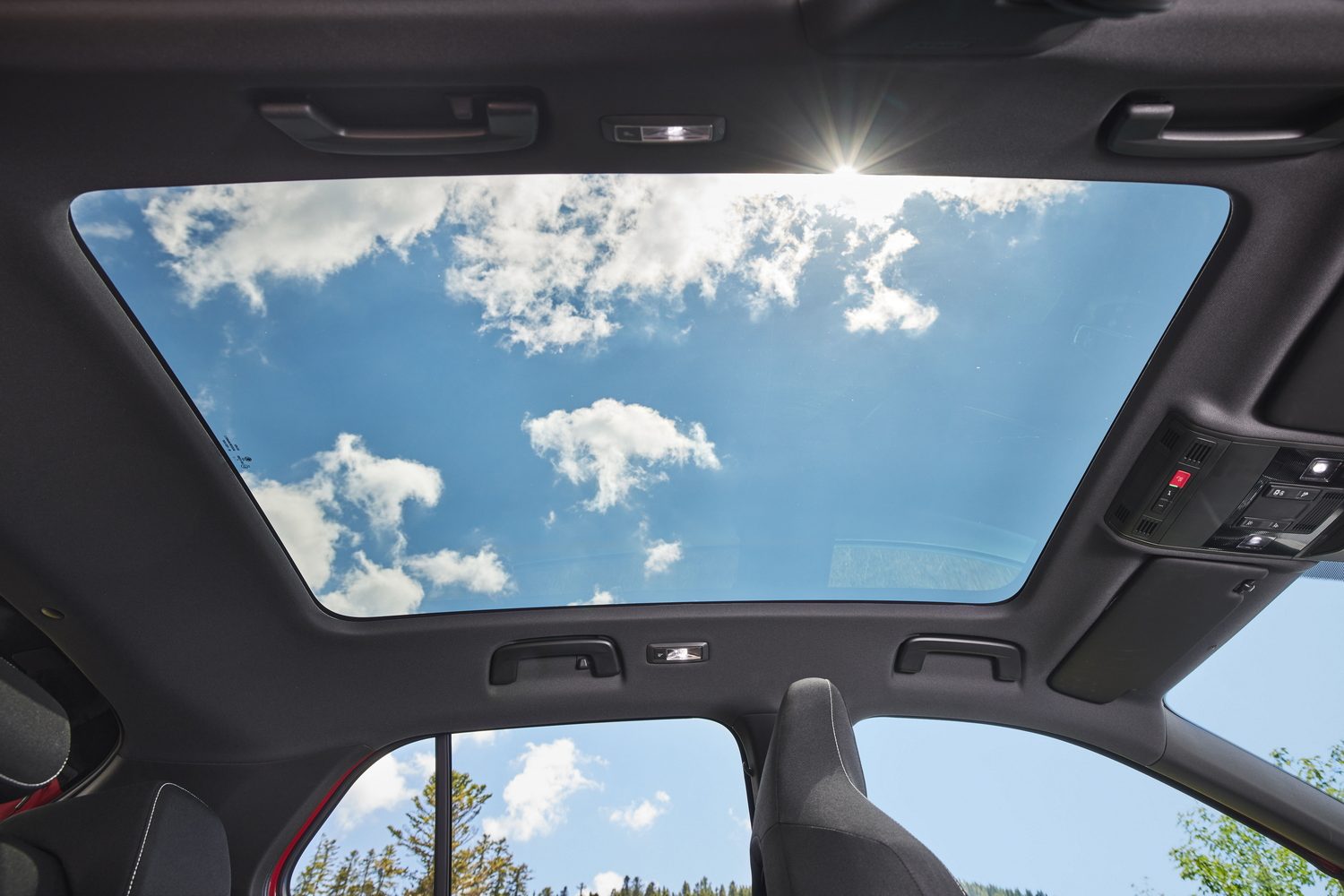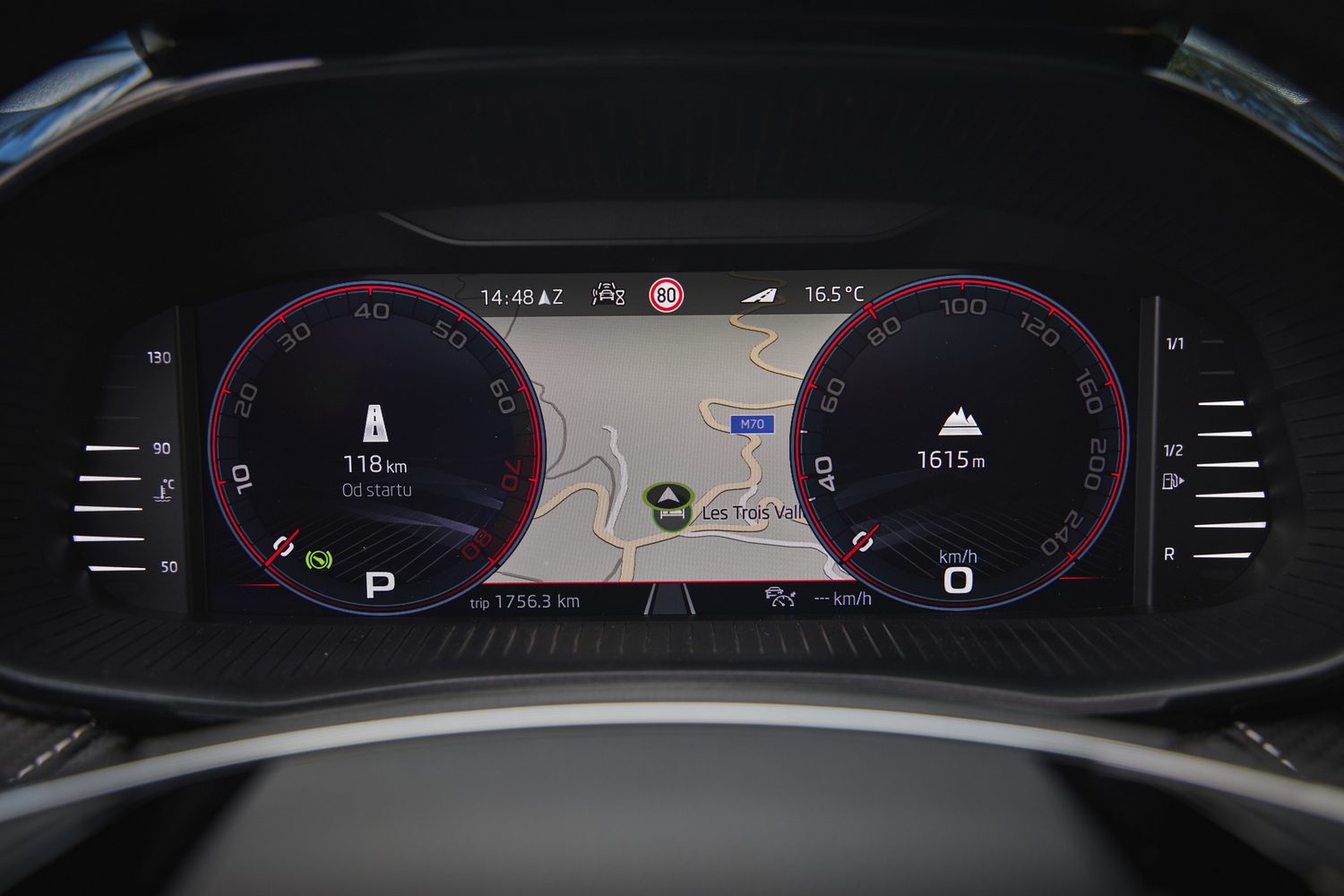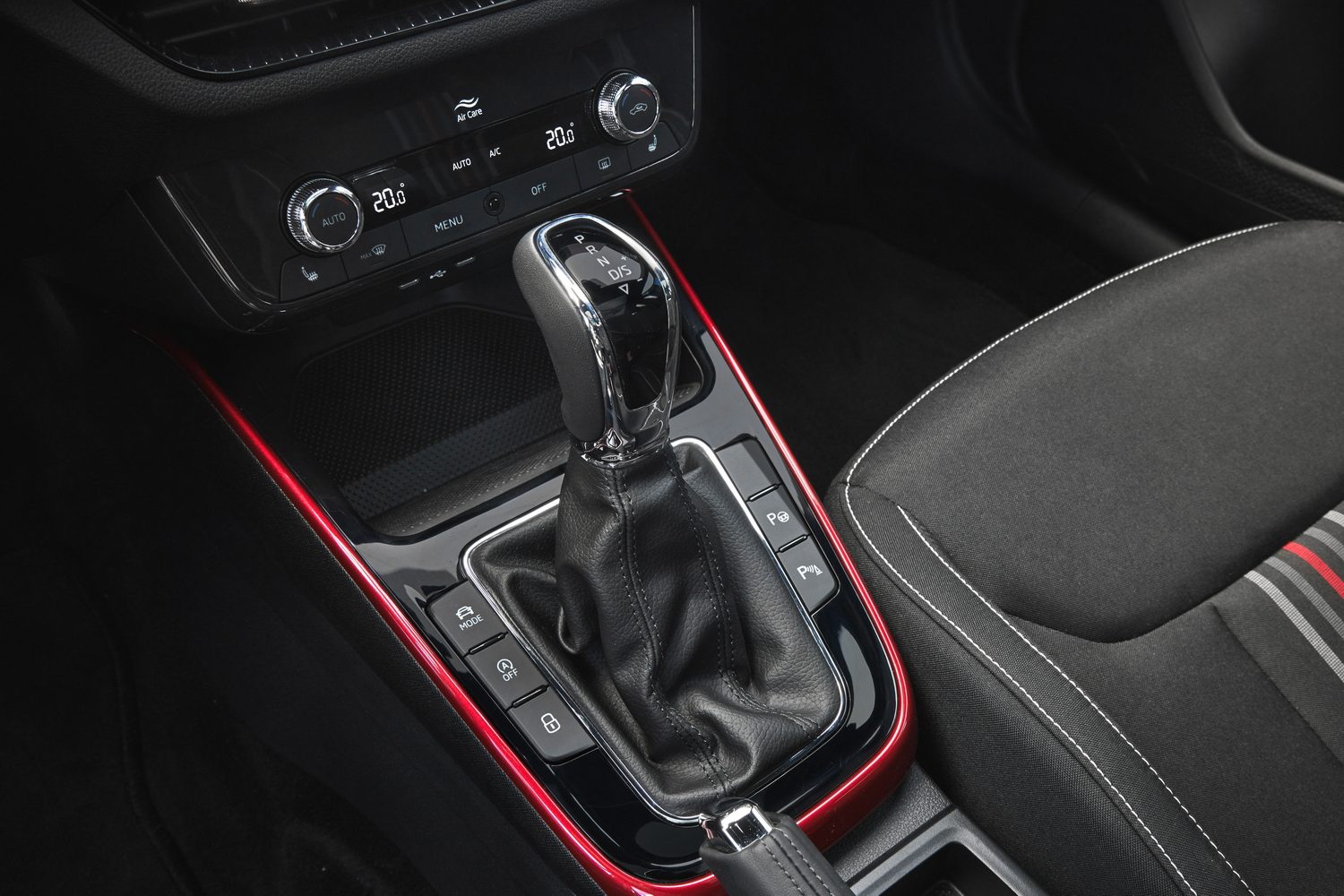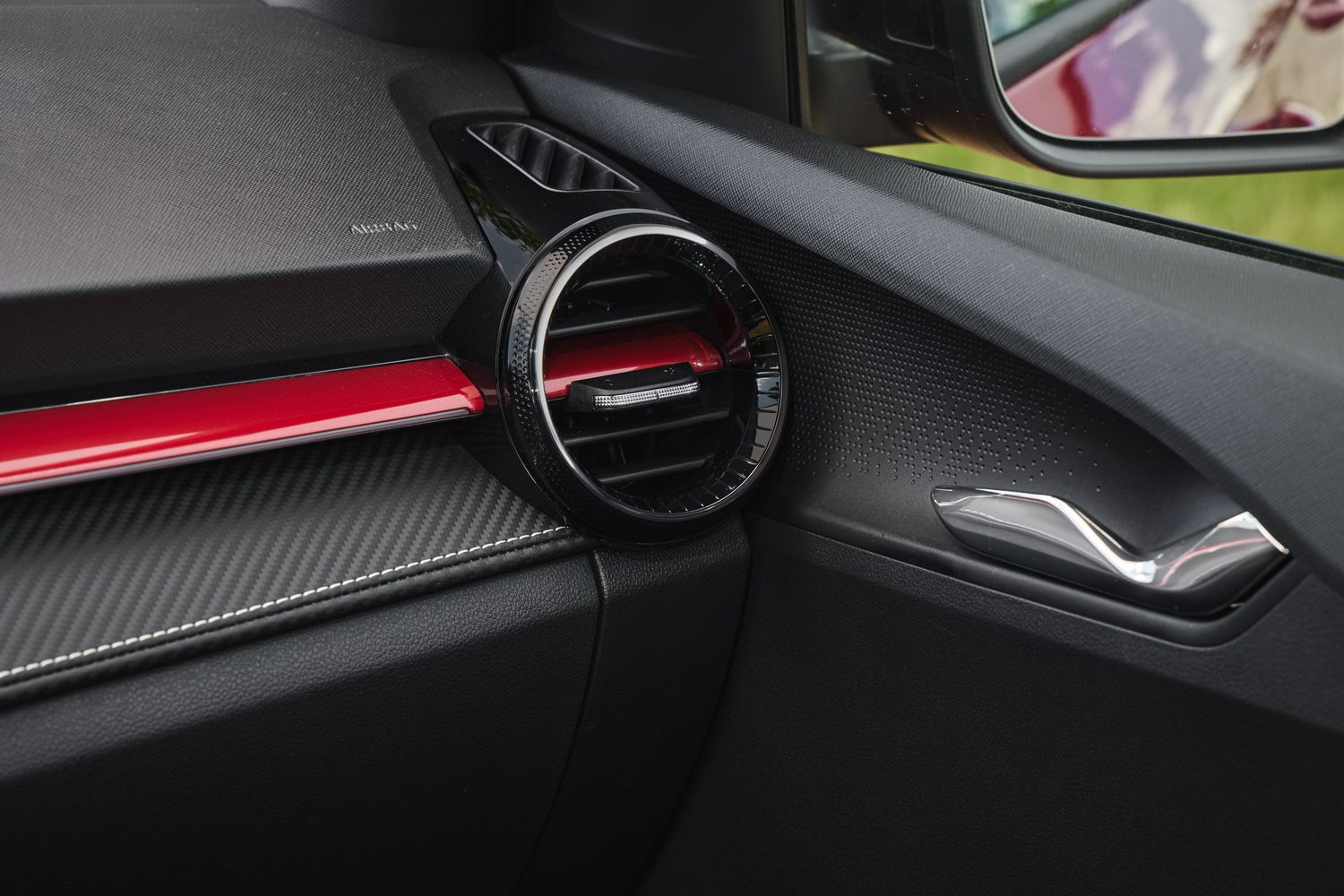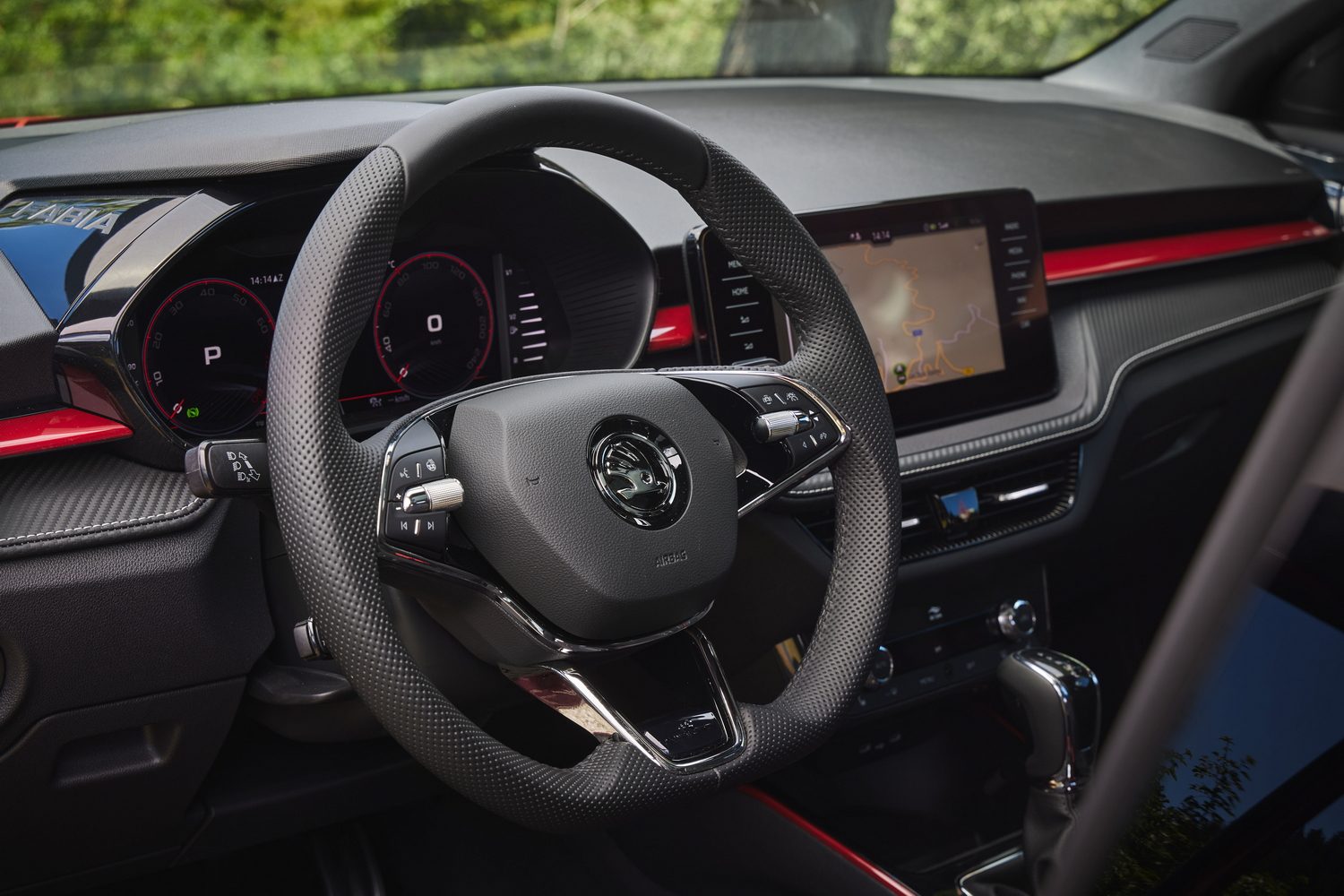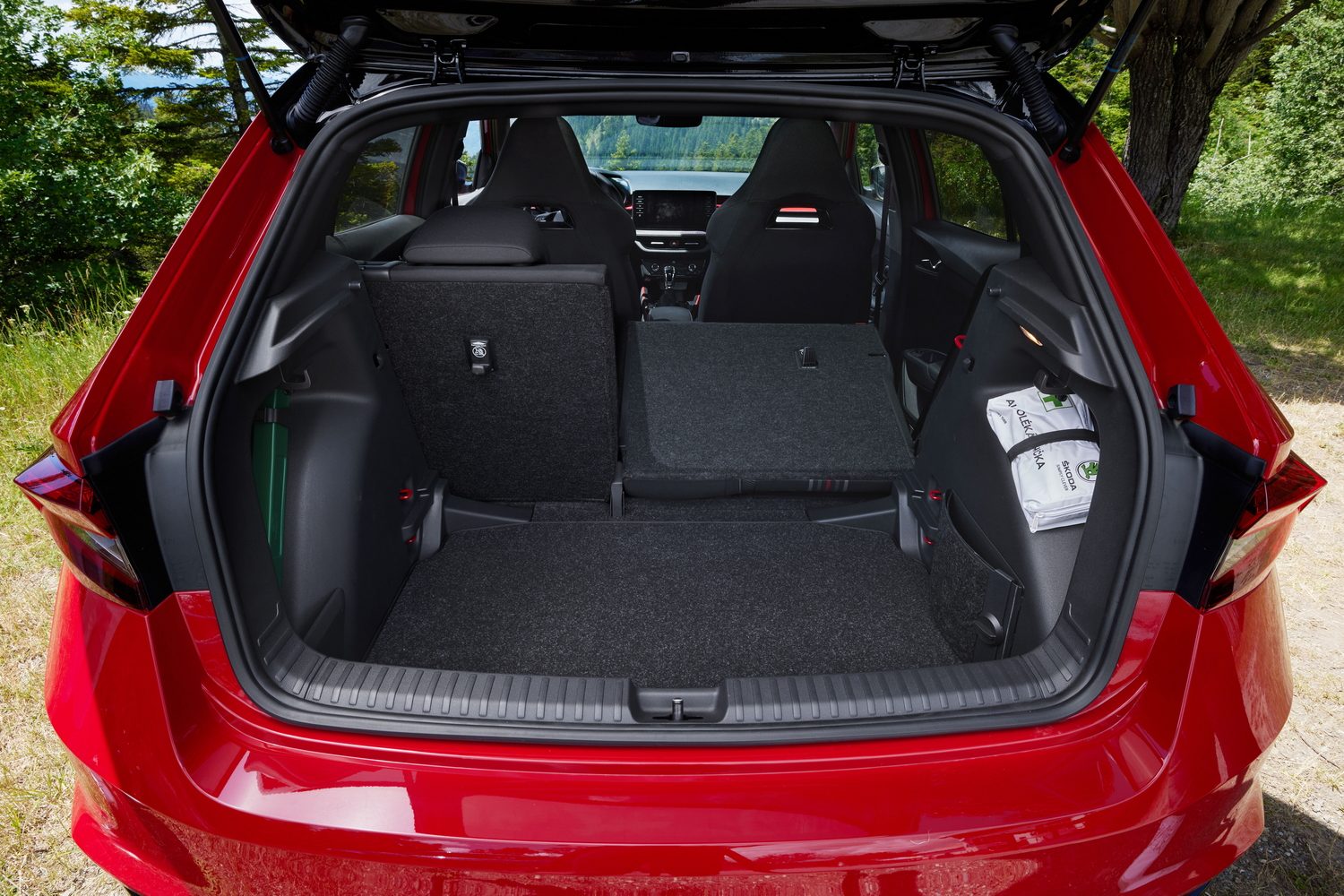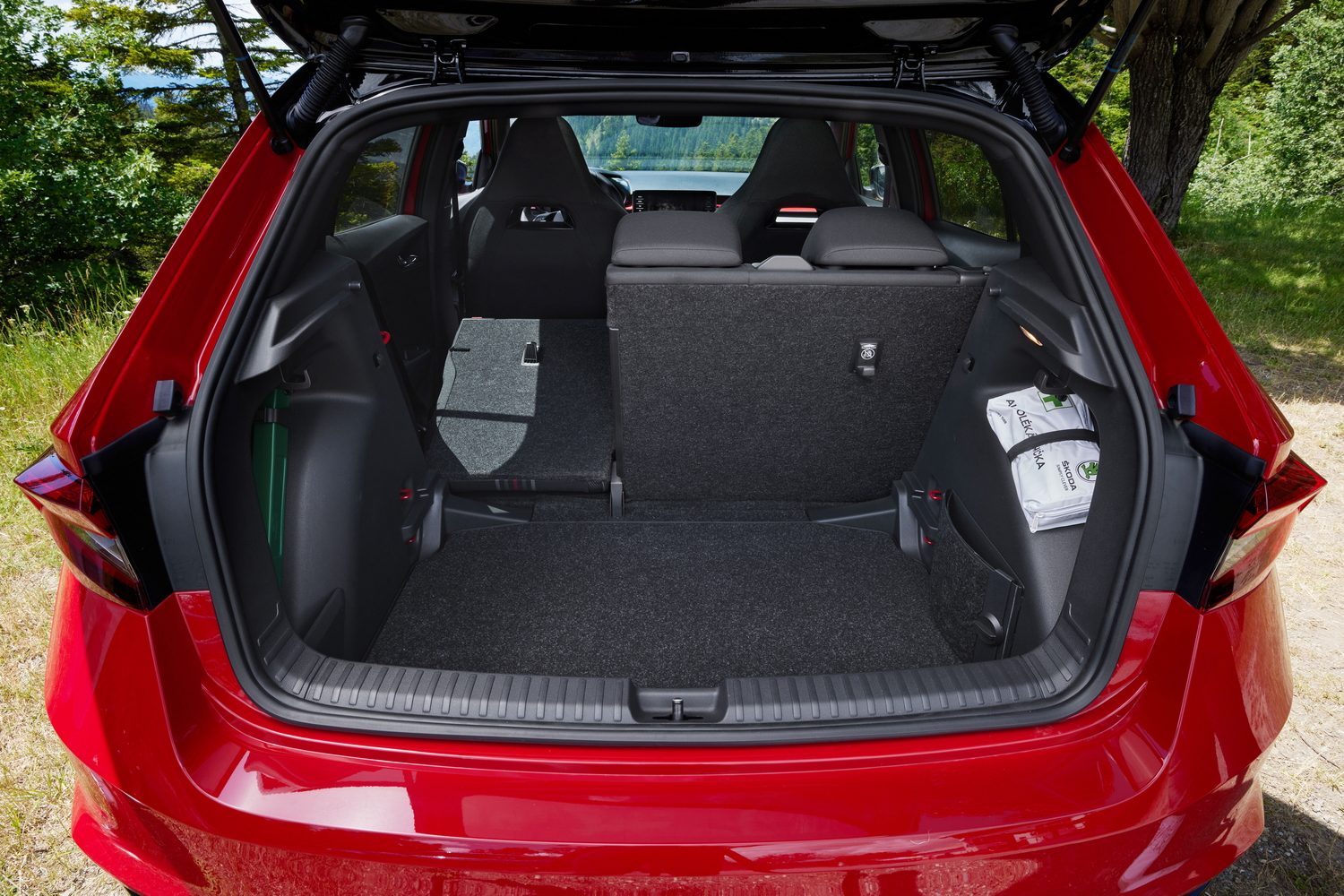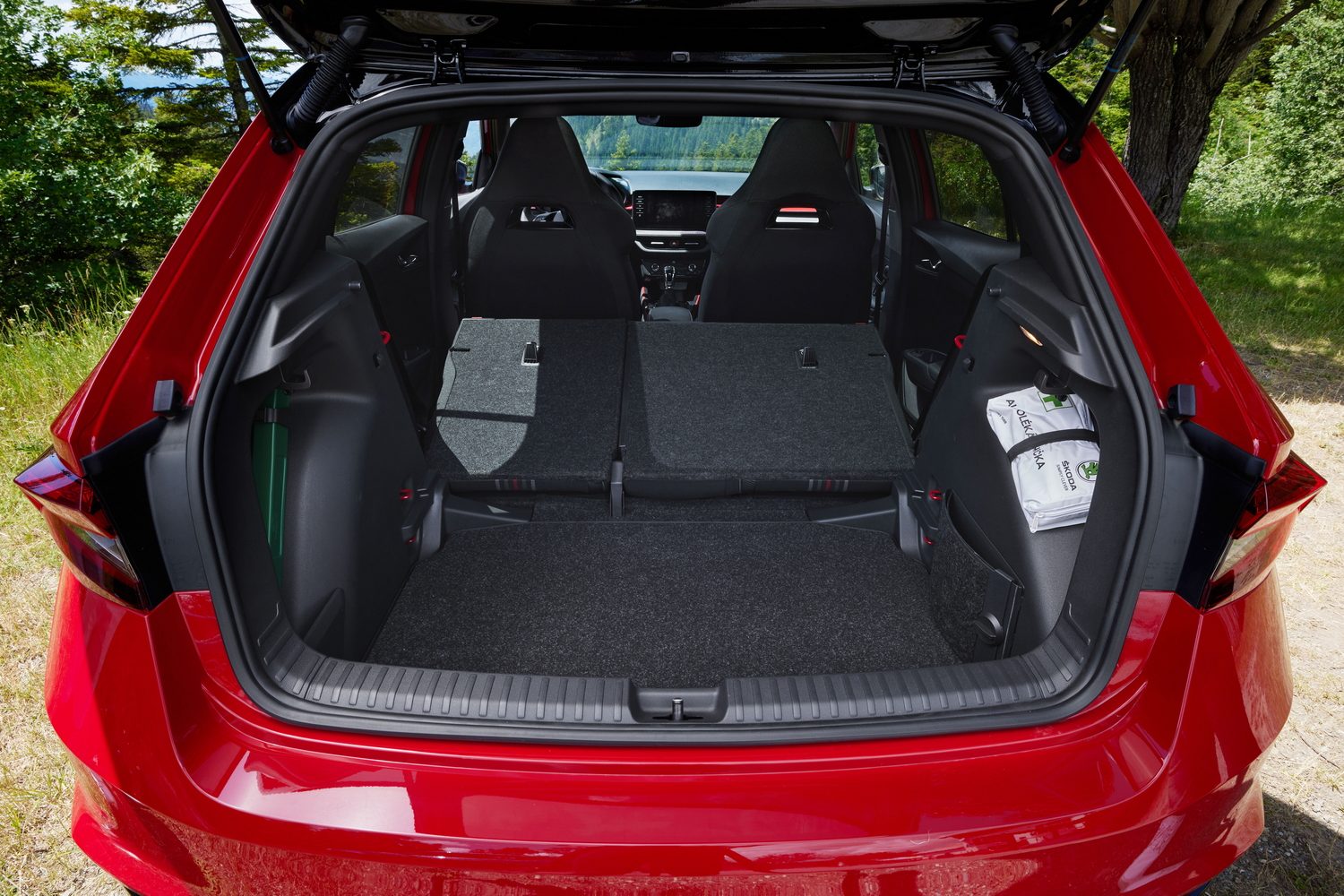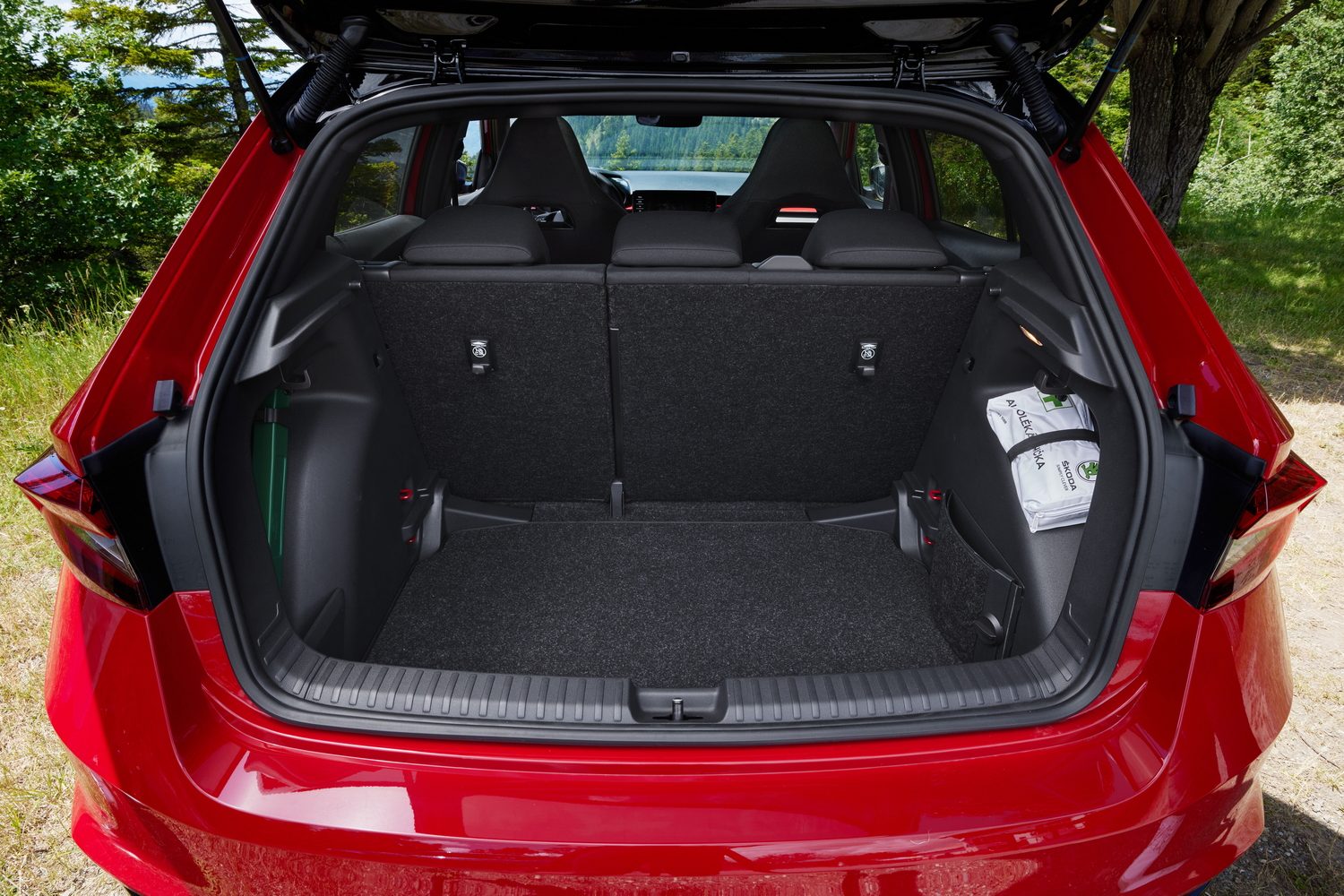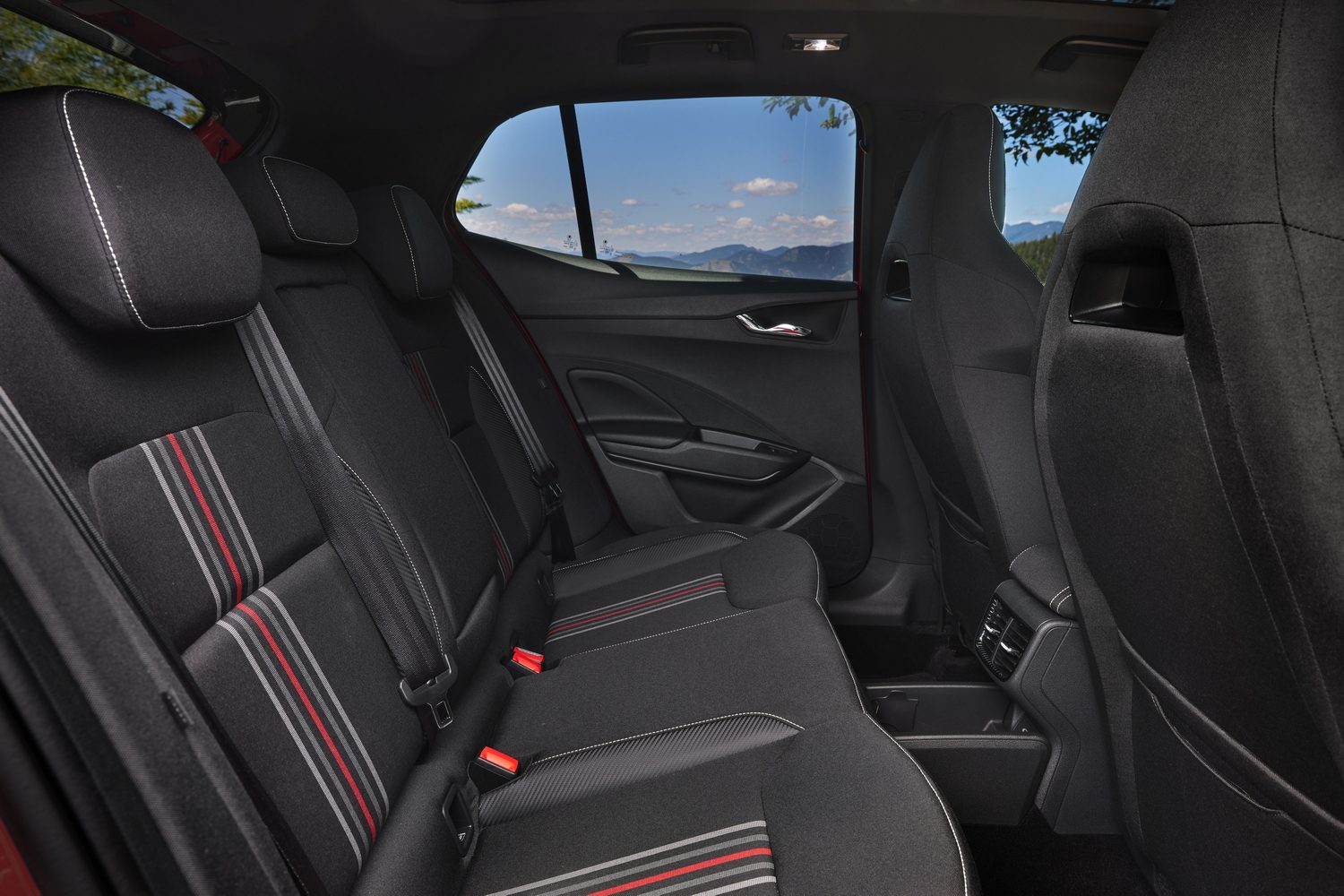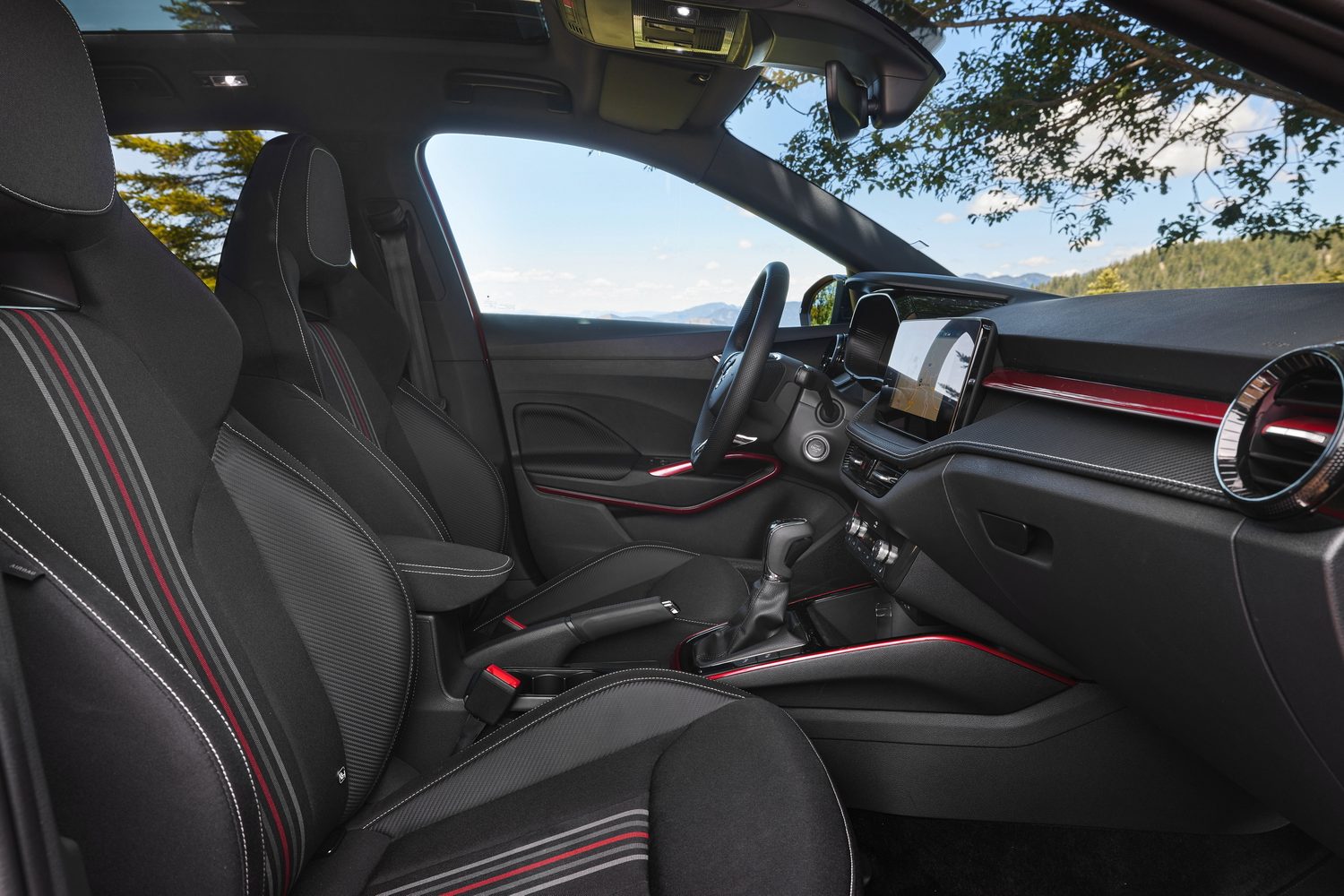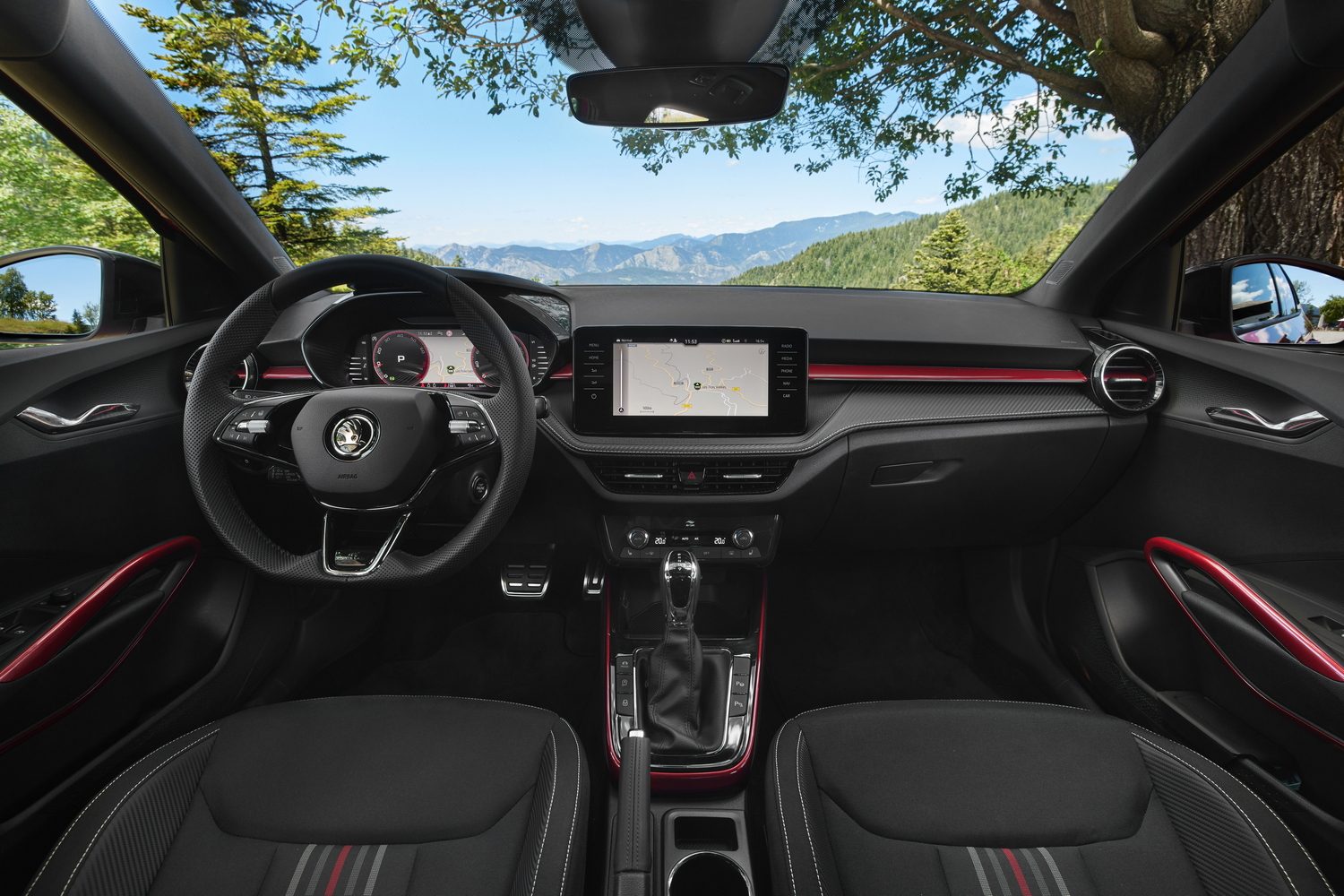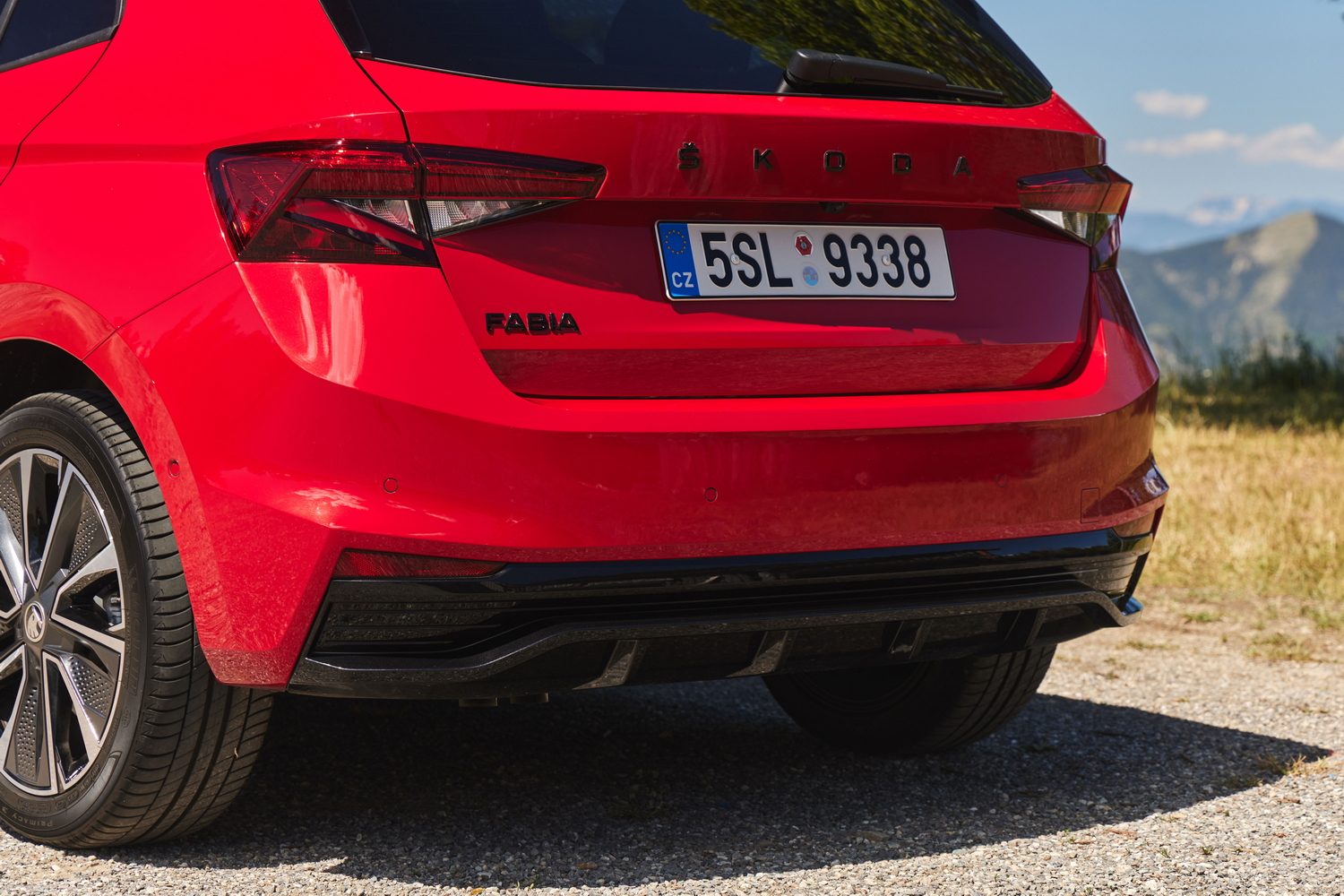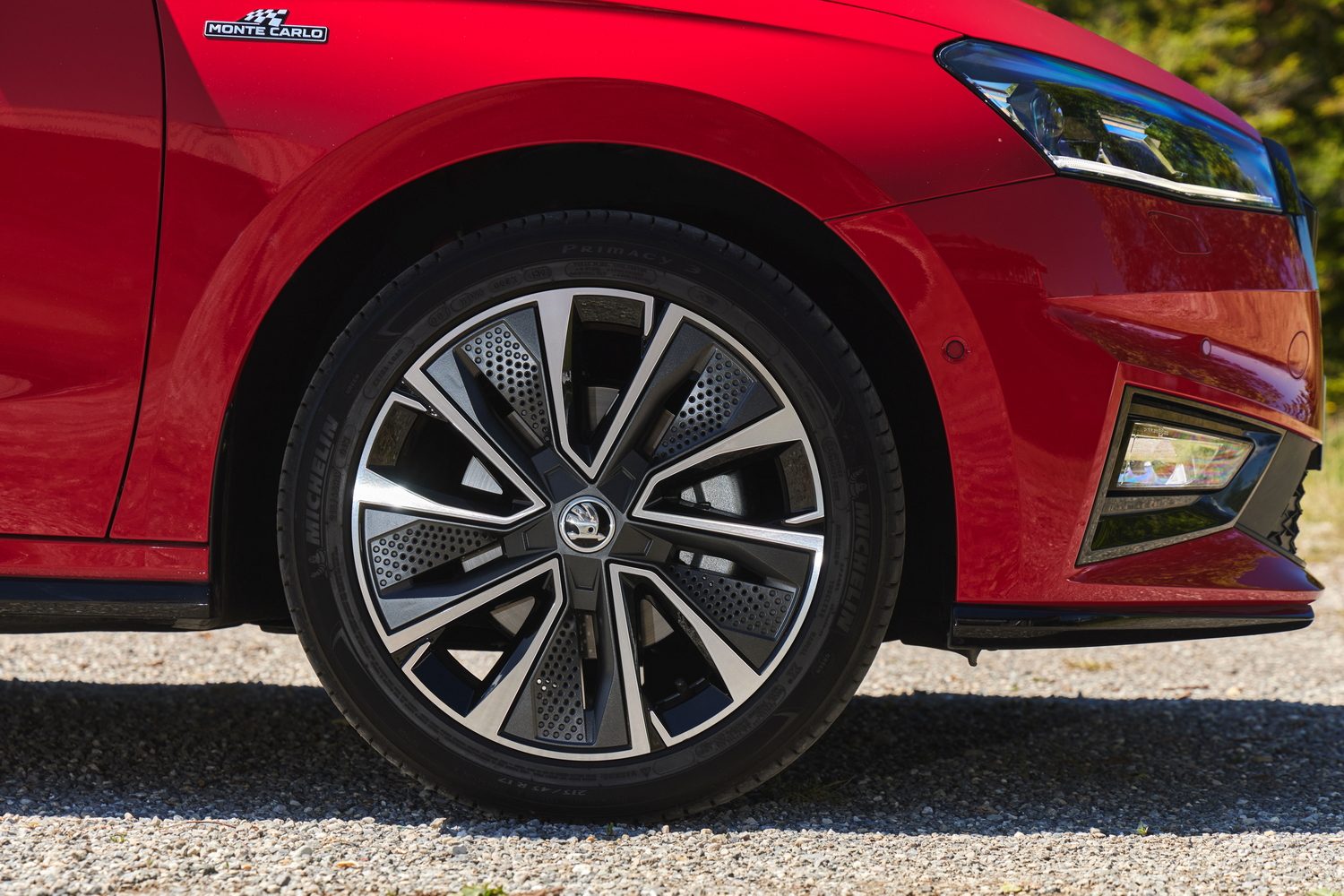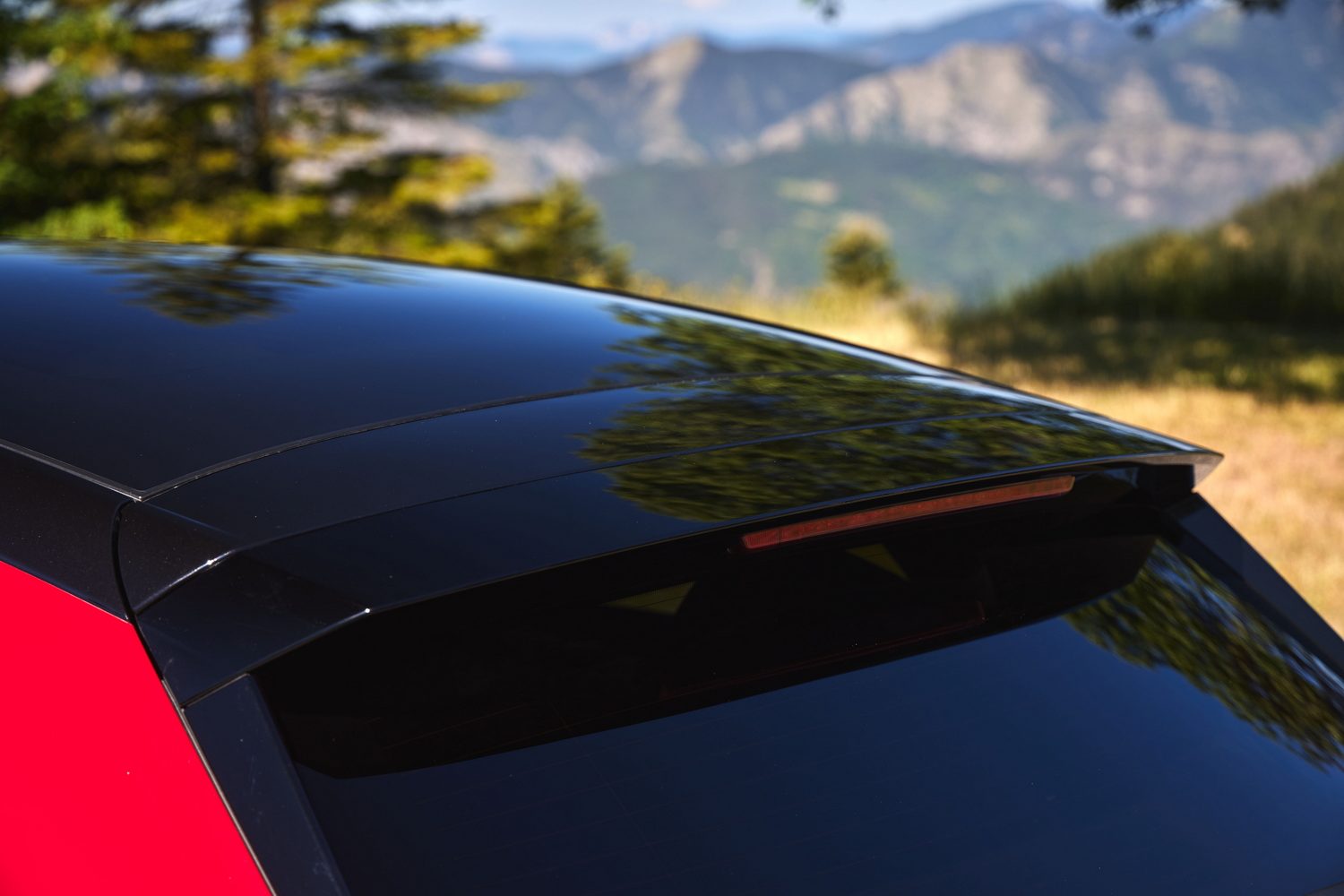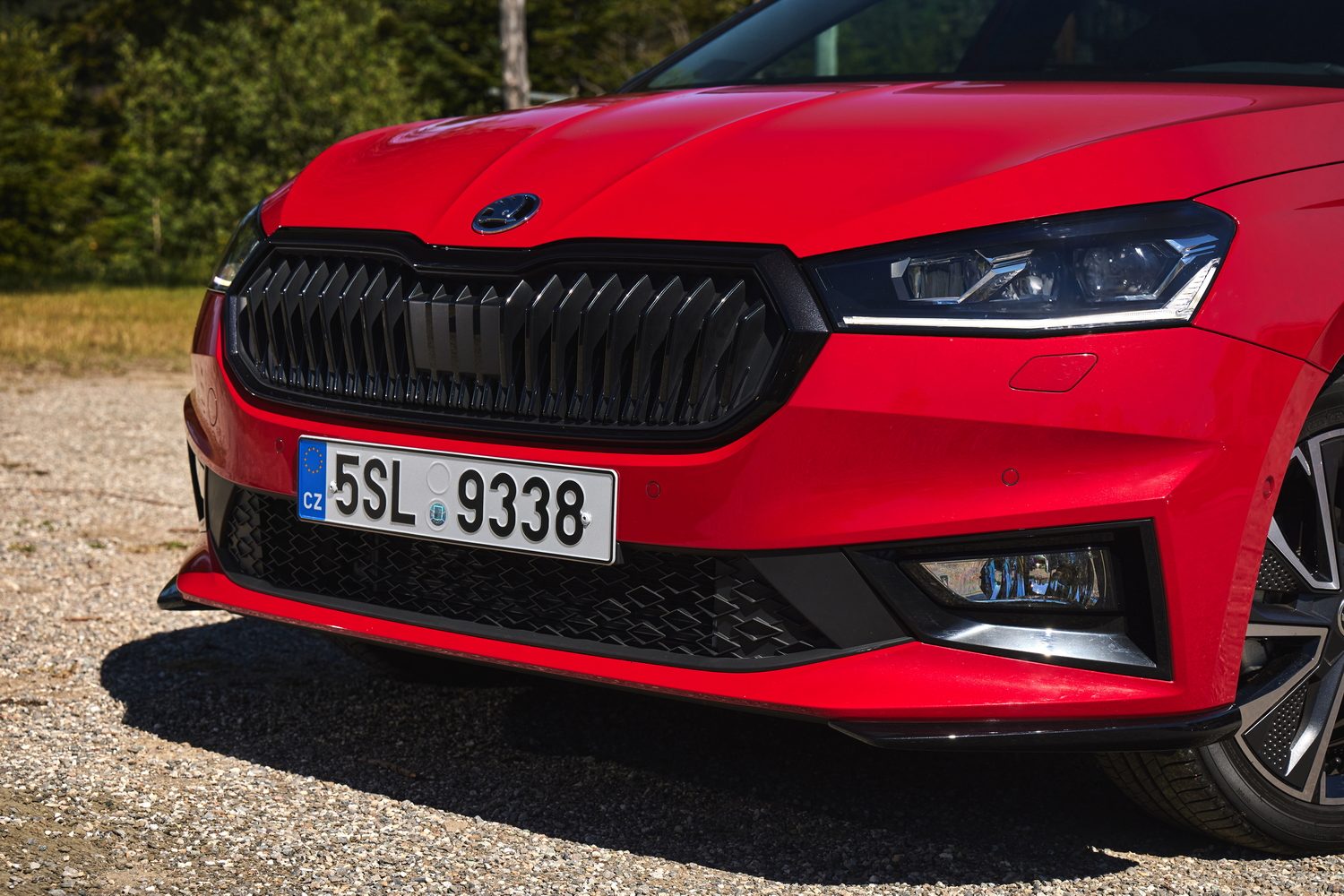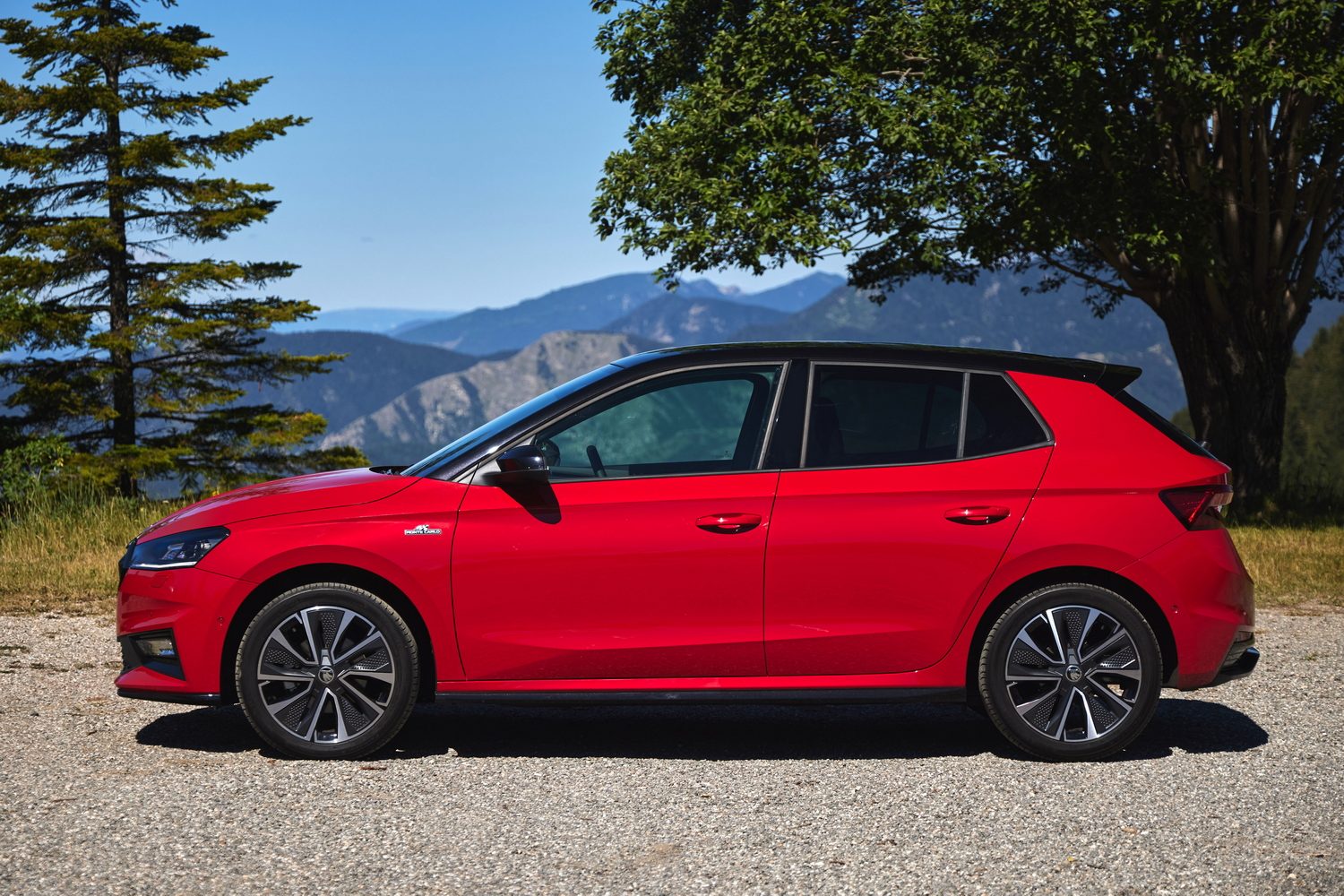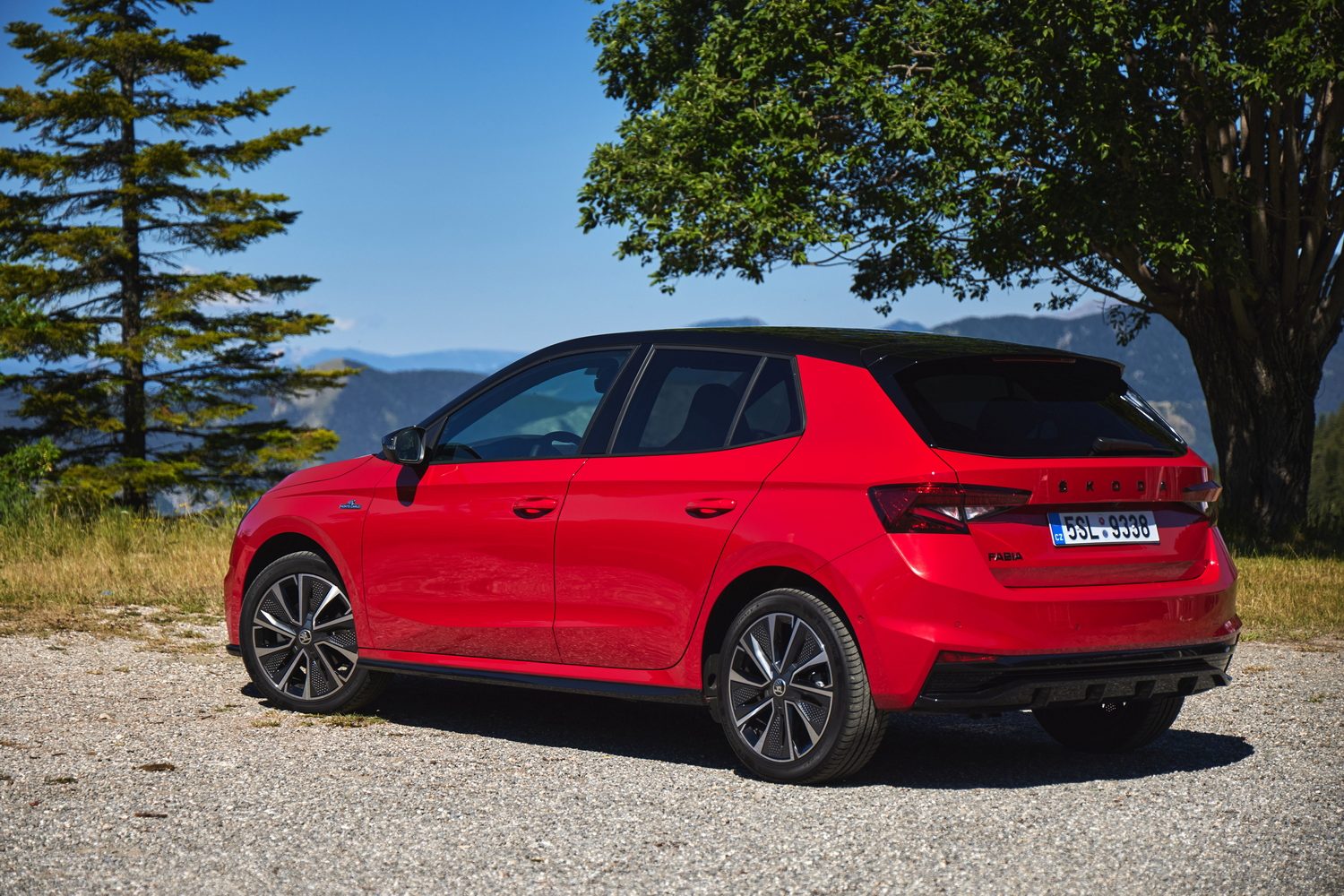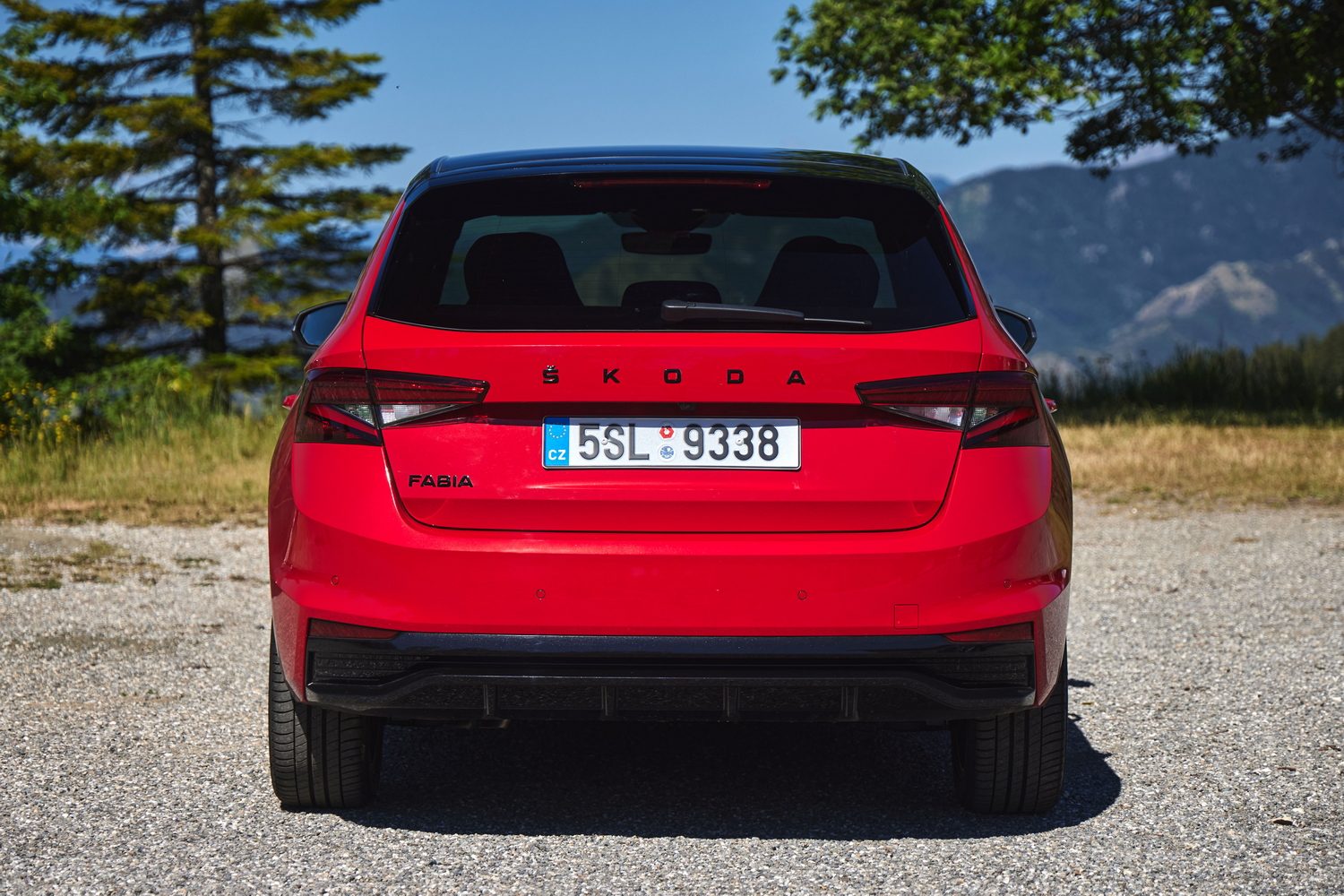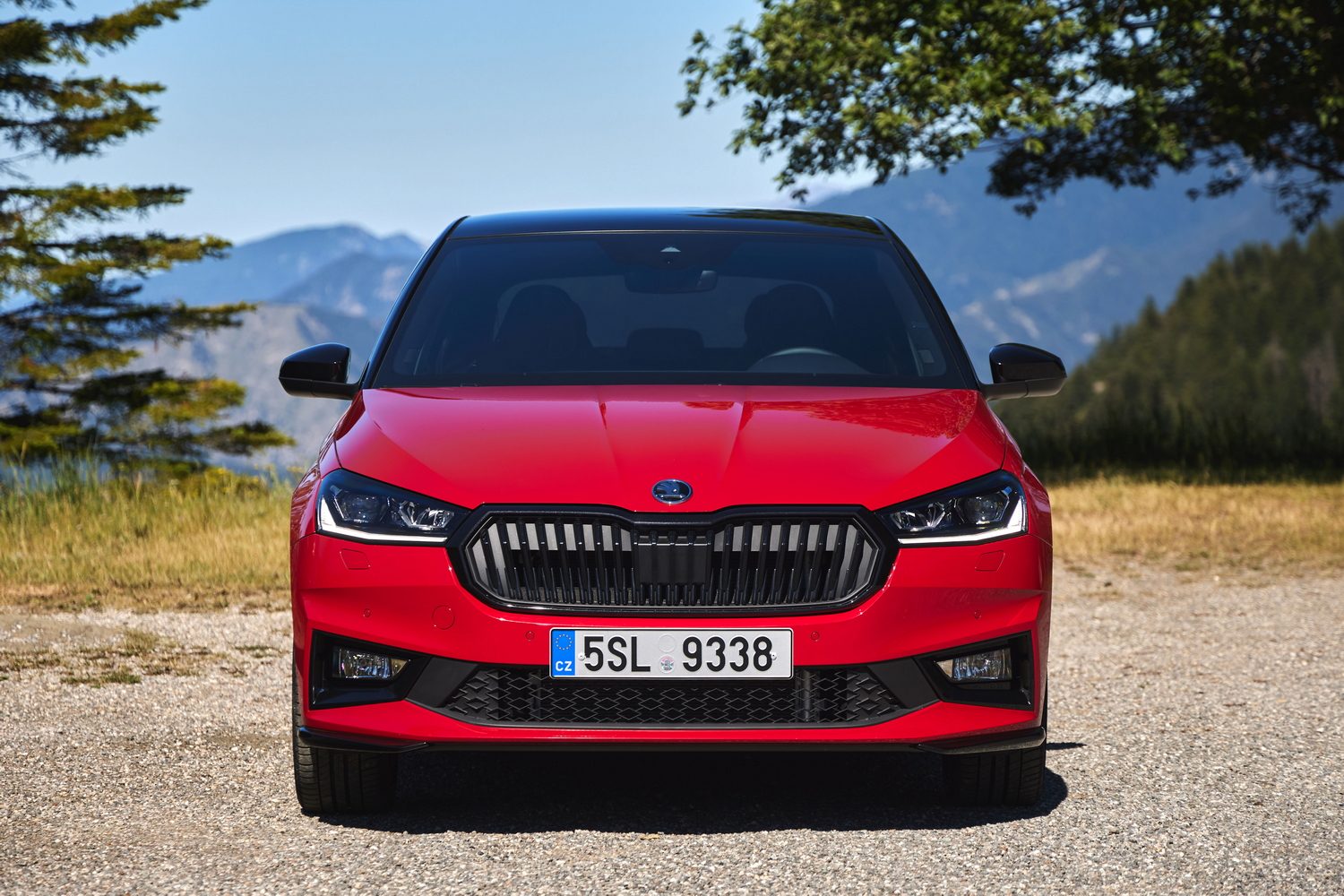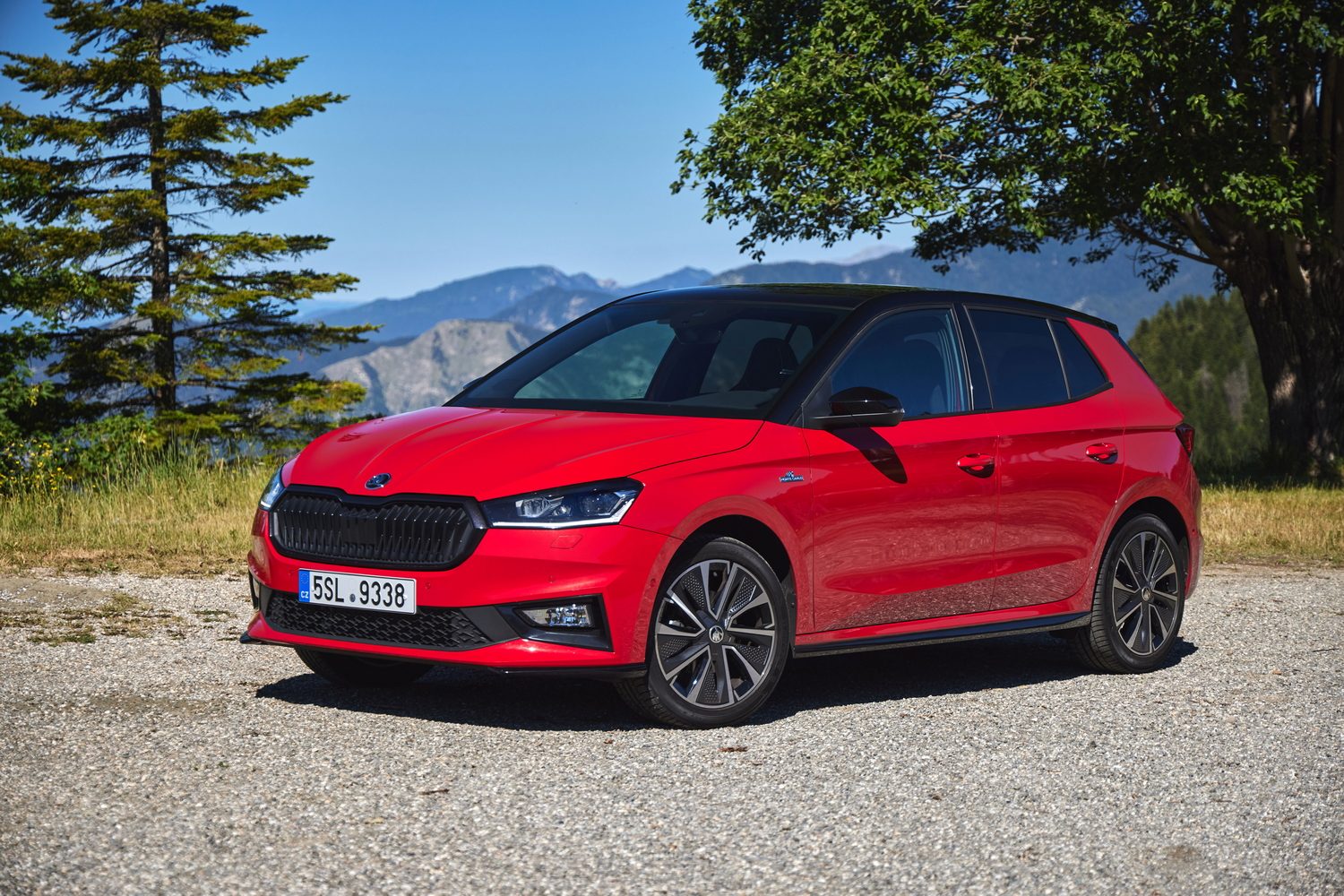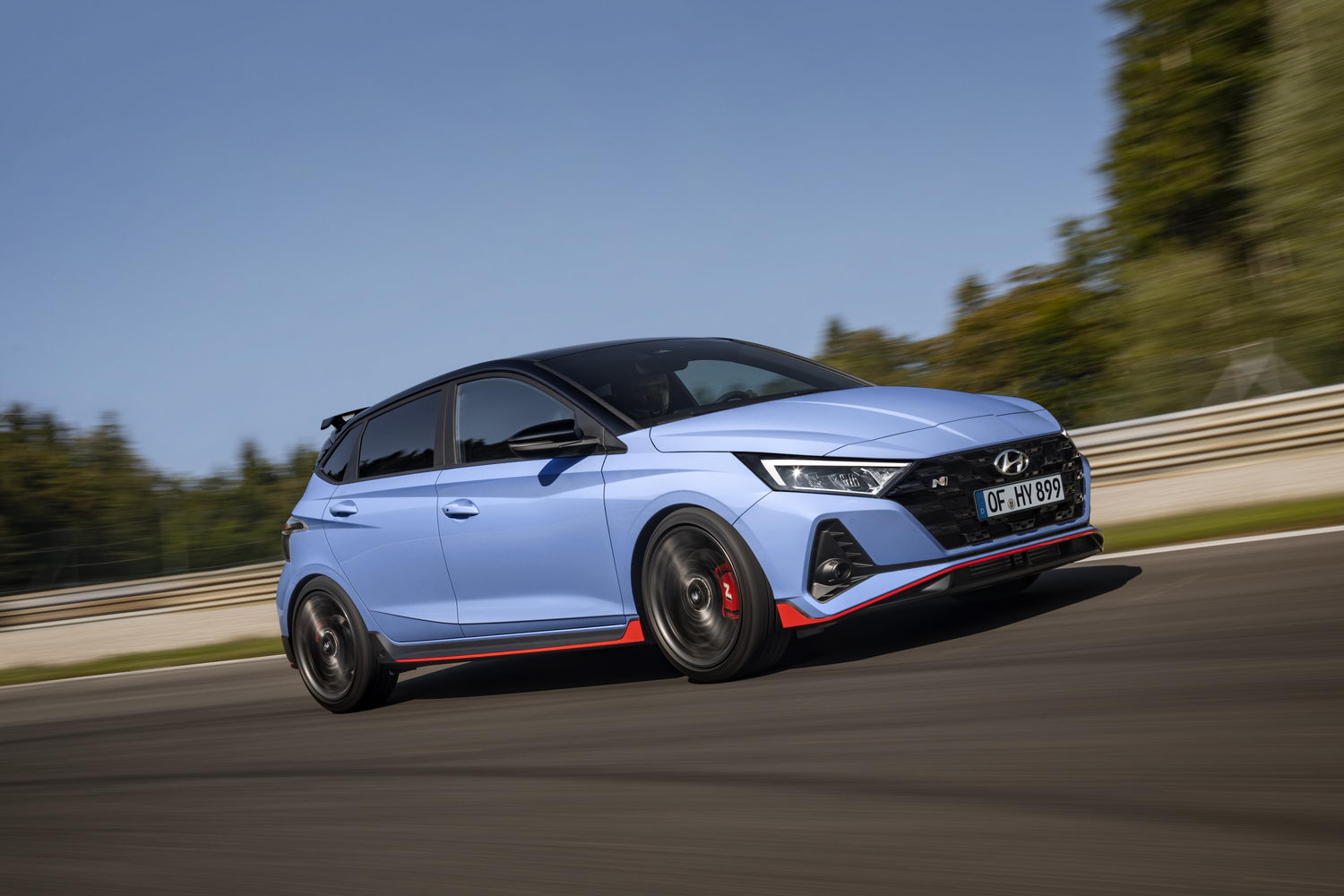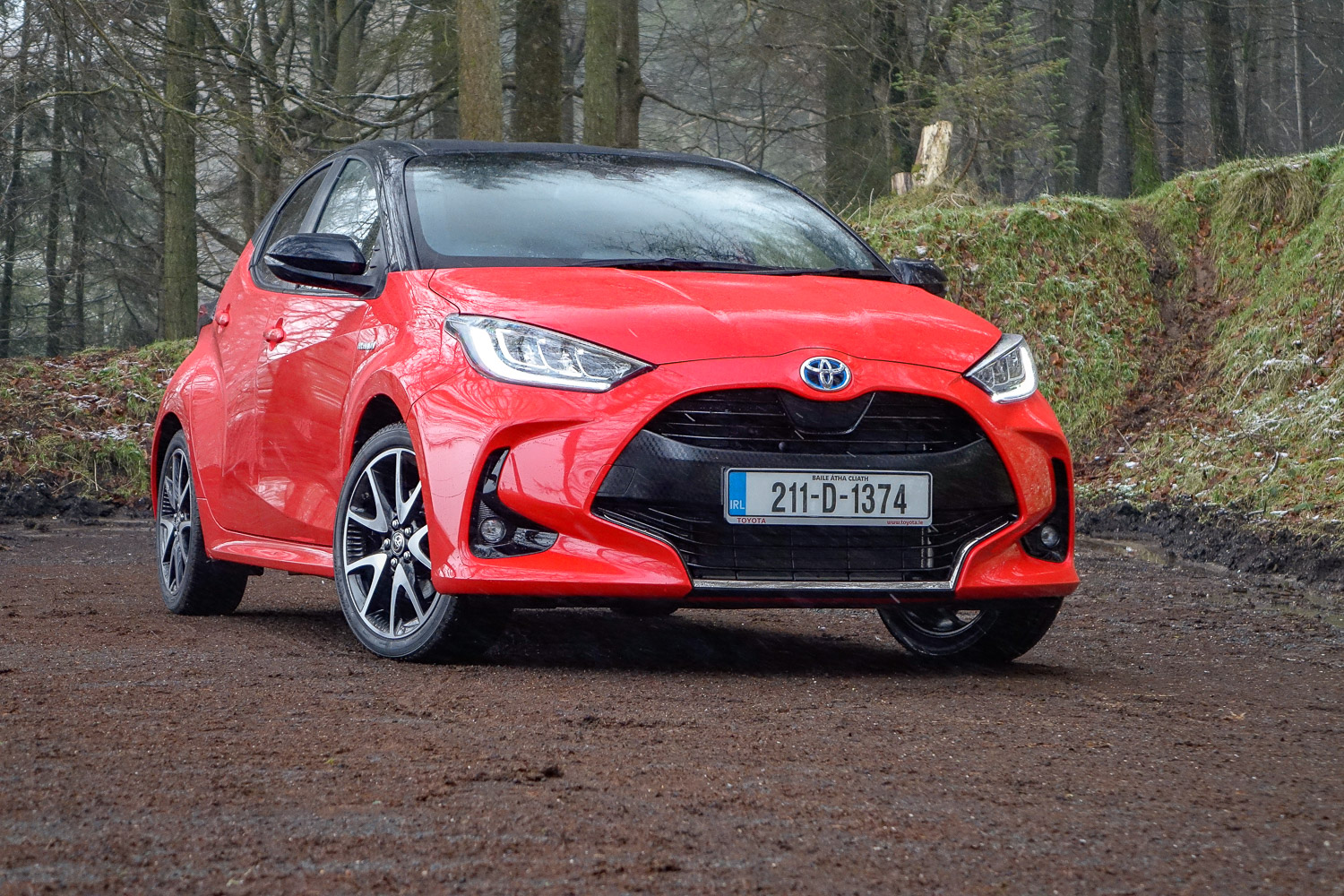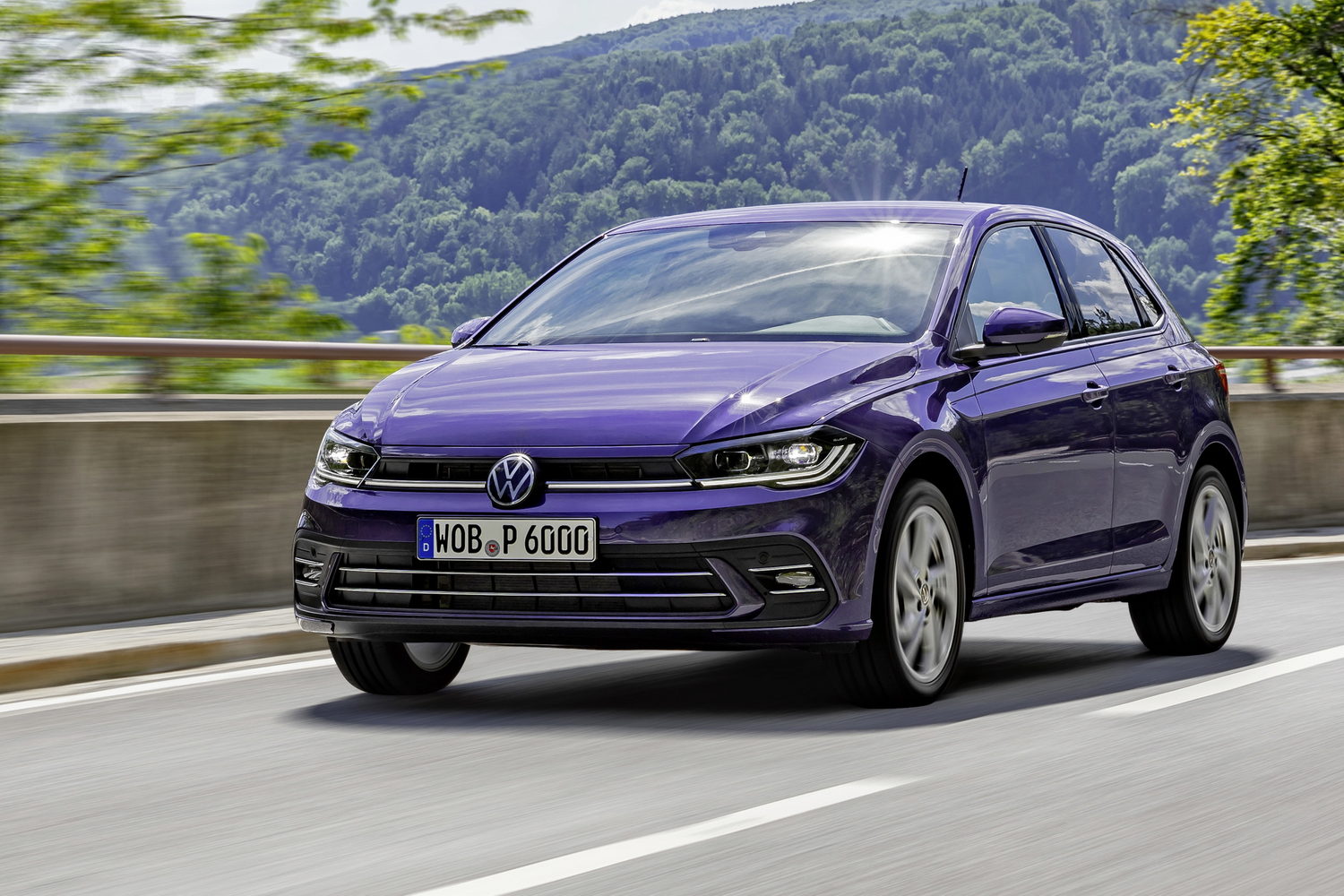The fourth-generation Skoda Fabia is the smallest car in the company's range but has several big-car features. It sits on the same platform that underpins other compact Volkswagen Group cars such as the Volkswagen Polo, and a streamlined offering in Ireland means the Fabia comes only with 1.0-litre petrol engines. The two most powerful of those are available in this range-topping Monte Carlo spec.
In the metal
The Skoda Fabia Monte Carlo specification builds on what is already a stylish hatchback by adding a somewhat sportier look. Available only as a five-door hatchback, it gains numerous black details, such as a contrasting roof, grille surround, door mirrors and lettering across the rear. Skoda adds small Monte Carlo badging on the front wings and 16-inch Proxima alloy wheels, too, the latter of which have a diamond cut finish with black inserts that enhance the car's aerodynamics.
There's more of the Monte Carlo trim to see inside where the cabin gets some tasteful flashes of red along the door pulls, across the dashboard and around the centre console. Skoda fits Sport seats in the front, which have more pronounced side bolsters and include red, grey and white lines down the centre with a carbon fibre effect on the sides. These can be optioned with a heated function as can the three-spoke leather steering wheel. An eight-inch 'Bolero' touchscreen system is standard on the Fabia Monte Carlo, too.
On the more practical side of things, the Fabia is quite a spacious car for its size. Rear passengers won't have many complaints about the level of space and comfort. The boot holds 380 litres and can increase to 1,190 litres if required.
Driving it
Changes to the Skoda Fabia Monte Carlo are purely cosmetic, as the rest of the chassis and available engines are the same as other versions in the range. Nevertheless, the Fabia provides a more polished driving experience than its predecessor, with suspension that strikes a good balance between comfort and handling as the speed increases.
There are four engine options across the Fabia range, but Skoda reserves the two most powerful for the Monte Carlo. These are the same 1.0-litre TSI turbocharged three-cylinder units that have two states of tune depending on the transmission. The five-speed manual gets a 95hp output, while the seven-speed DSG automatic tested here gets 110hp. That extra 15hp translates into faster acceleration from 0-100km/h, taking 9.6 seconds (versus 10.6 seconds for the manual) and a marginally higher top speed.
Being a three-cylinder engine means it isn't quite as smooth running as a four-cylinder, though it has a bit more character. It has a distinctive thrum under heavier load and the dual-clutch automatic transmission delivers gear changes quickly. Along the sweeping bends and hairpin corners of the famed Col De Turini, the stopping power of the brakes and optional paddle shifters did help give a sporty side to the Fabia. Those seeking out-and-out hot hatch thrills will need to look elsewhere; however, for those happy to have the sportier looks and enjoy the occasional bit of spirited driving, the Monte Carlo is enough, especially in urban settings.
Big-car features such as adaptive cruise control and safety systems that include lane keep assist all help to make the Fabia a less taxing driving experience over longer distances. The engine note drops away at slower speeds as the automatic makes driving a pleasant and easy experience. The light steering is ideal when driving around town and parking. Speaking of which, the Fabia gets rear parking sensors as standard, but a reversing camera and front parking sensors are both optional extras. Out of town, it will cruise quite comfortably on a motorway, where that extra horsepower and the seven-speed automatic are at their best.
What you get for your money
Getting into the most affordable Skoda Fabia will cost €19,820, but that will only get you the naturally aspirated 65hp five-speed manual model in the Active specification. The Fabia Monte Carlo is only available with the two turbocharged 1.0-litre TSI petrol engines, which cost €25,690 and €28,290 for the manual and automatic transmissions, respectively.
Being the highest-spec model gets you all the looks of a range-topper with extra flashes of colour inside do help to lift the cabin. The eight-inch touchscreen is good and includes the now essential smartphone mirroring. A larger 9.2-inch unit is optionally available, but at €1,168 it is a lot to spend for only a marginal gain in screen real estate. One option buyers may deem better value for lifting the interior is the digital instrument display that Skoda calls the Virtual Cockpit, which costs €535.
Summary
Upmarket looks, decent equipment levels and a choice of turbocharged petrol engines make the Fabia Monte Carlo a worthy car to crown the hatchback line-up. But with pricing that matches the Volkswagen Polo's once you add some options, and the lack of any electrification, the Fabia is perhaps a slightly less obvious purchase in this specification.

